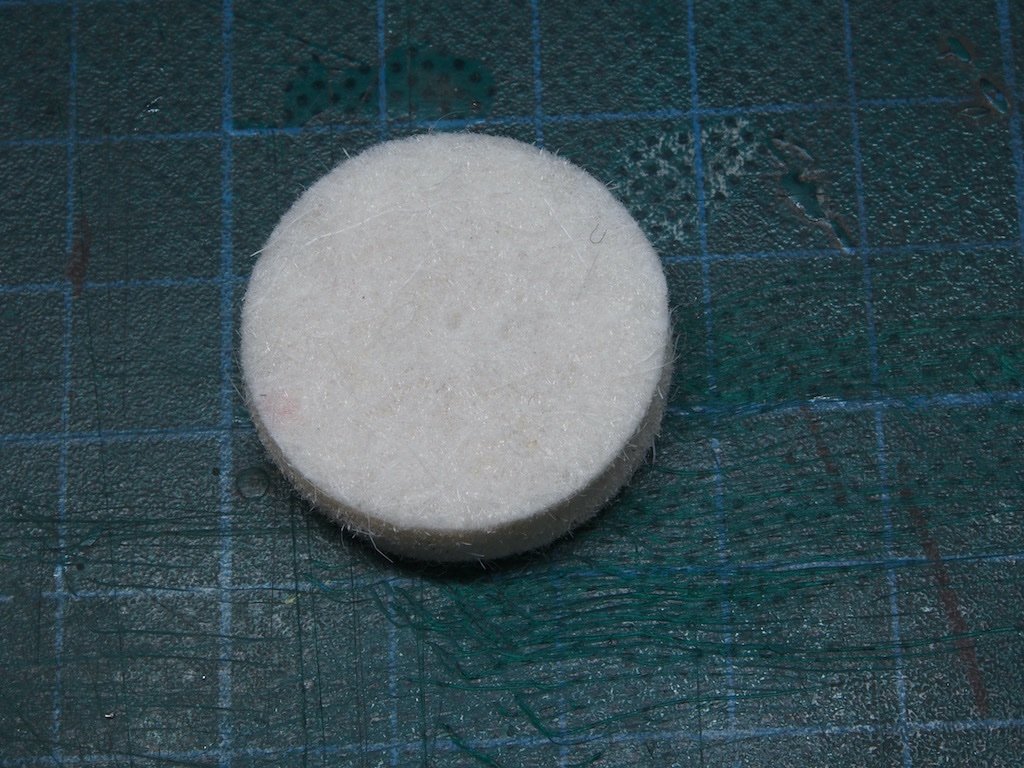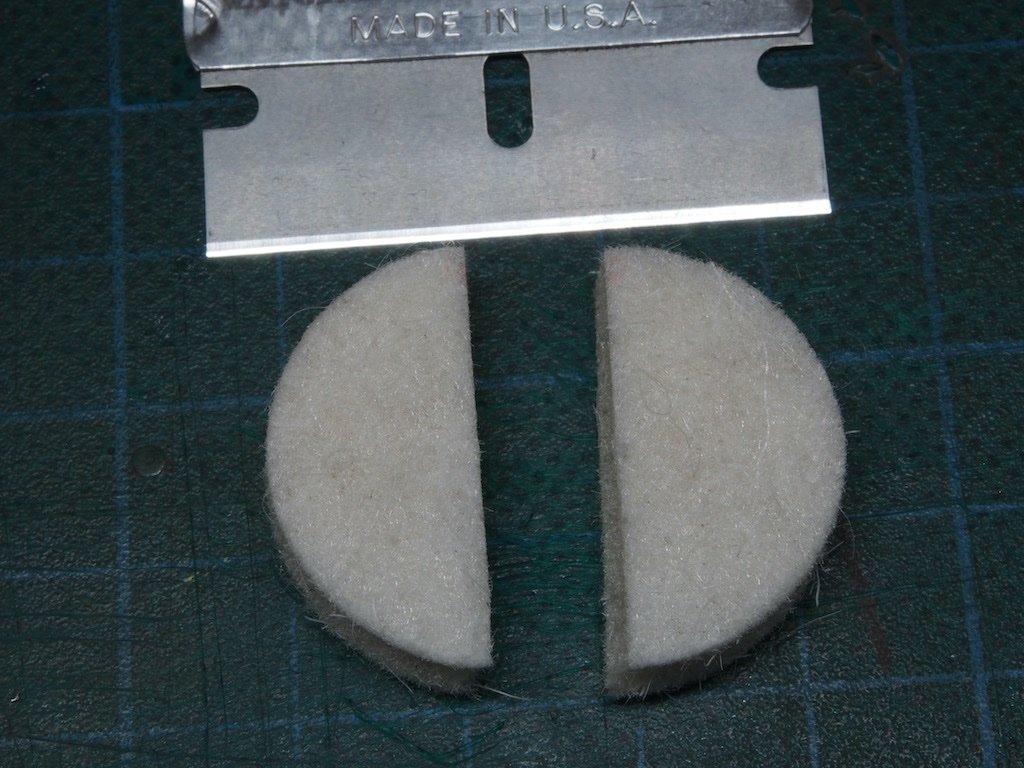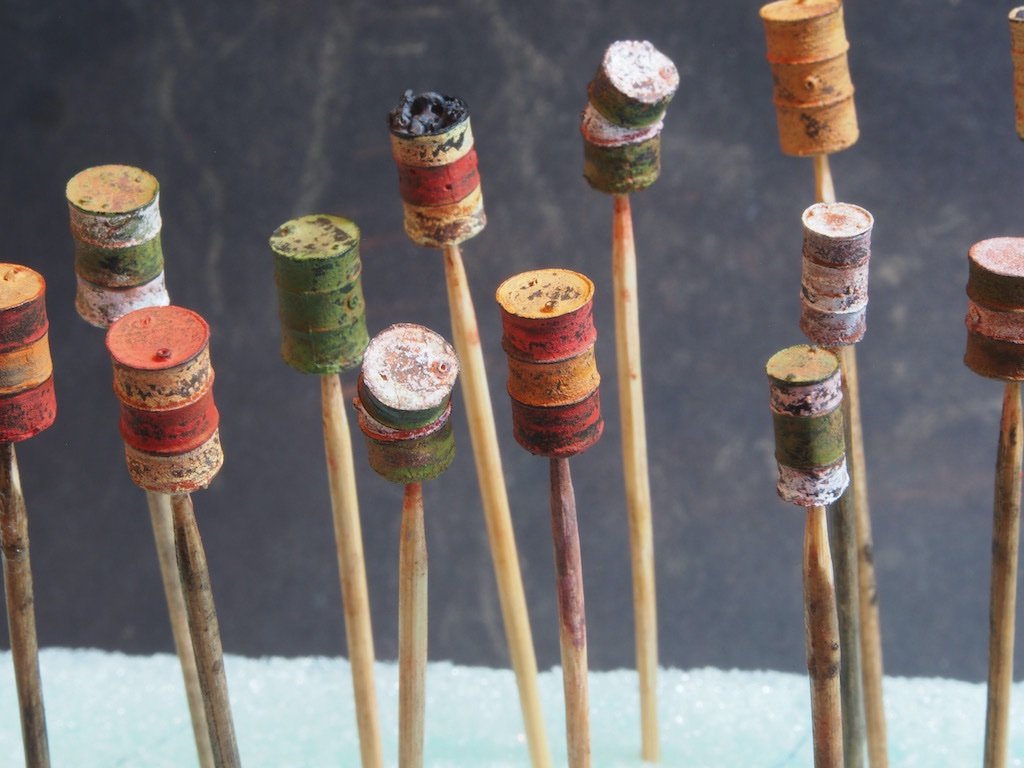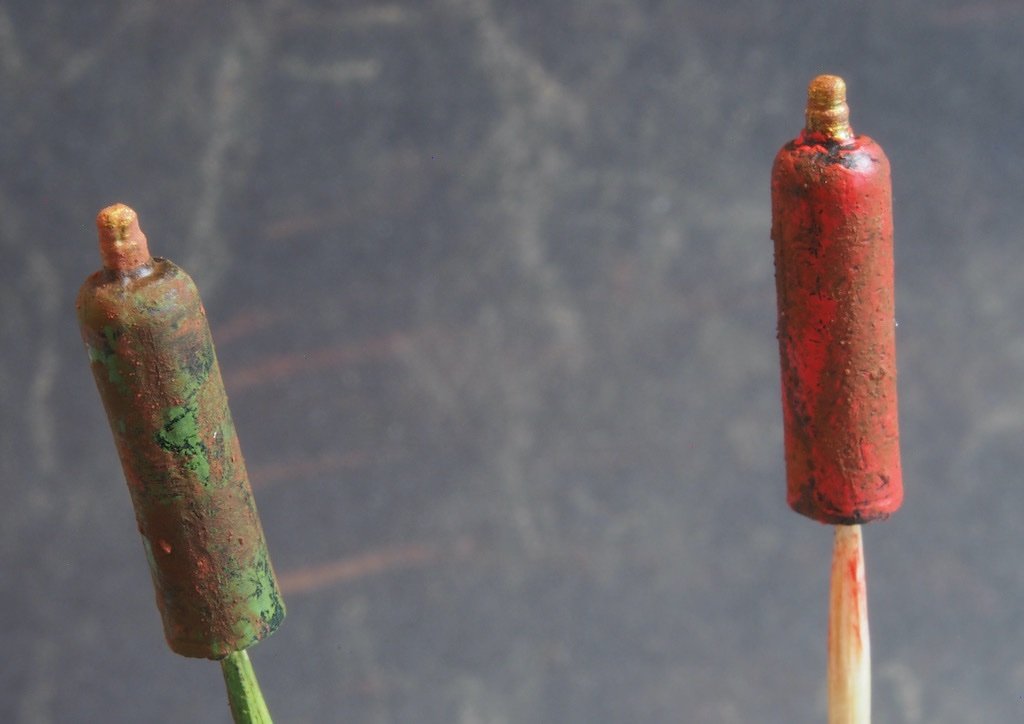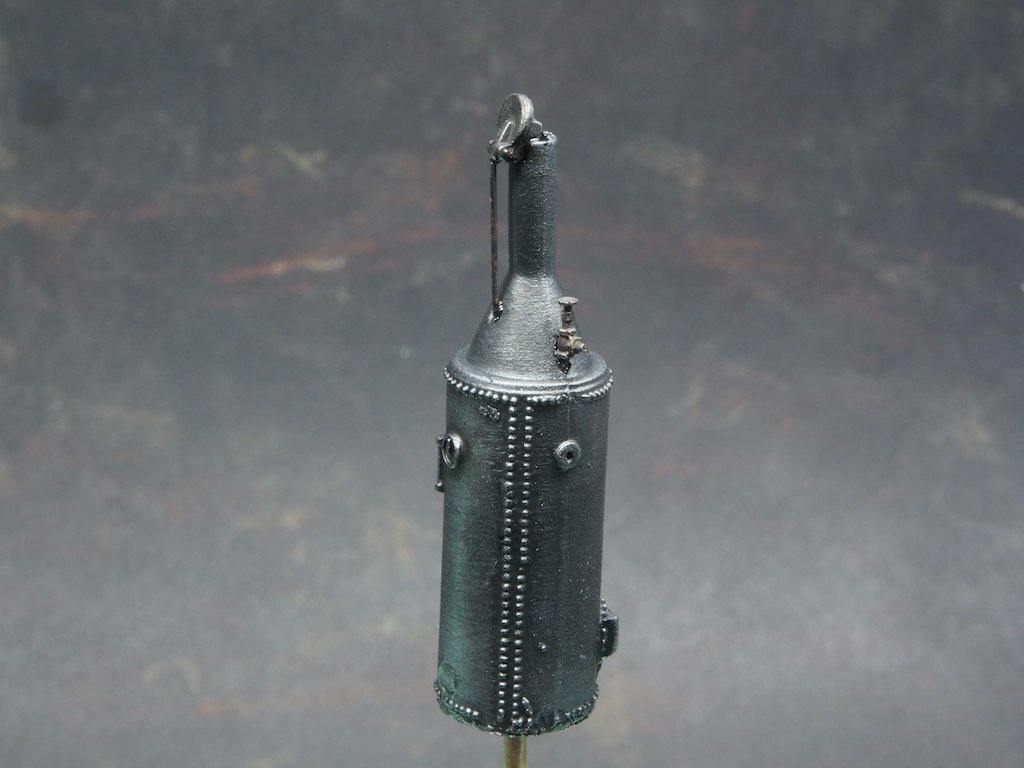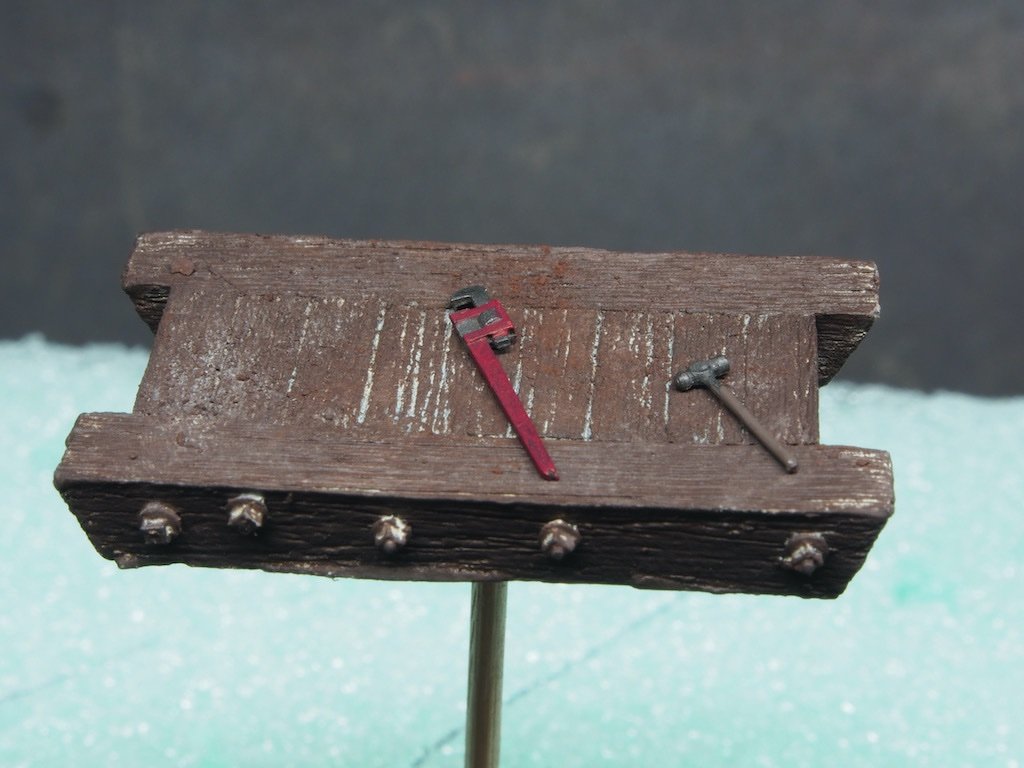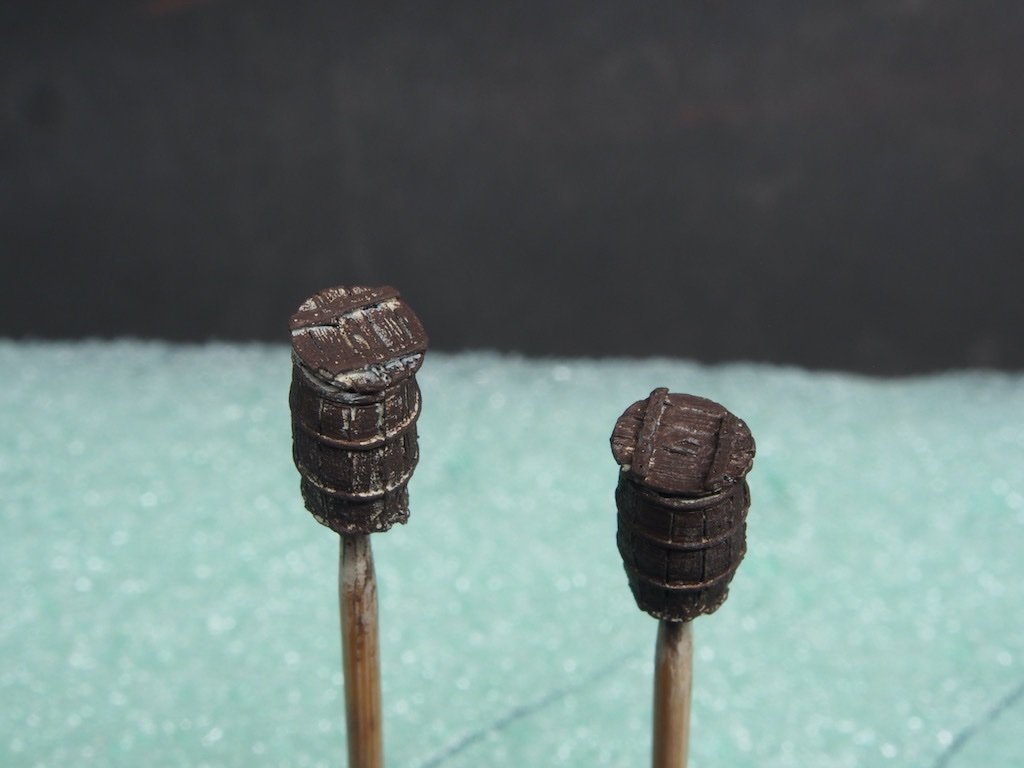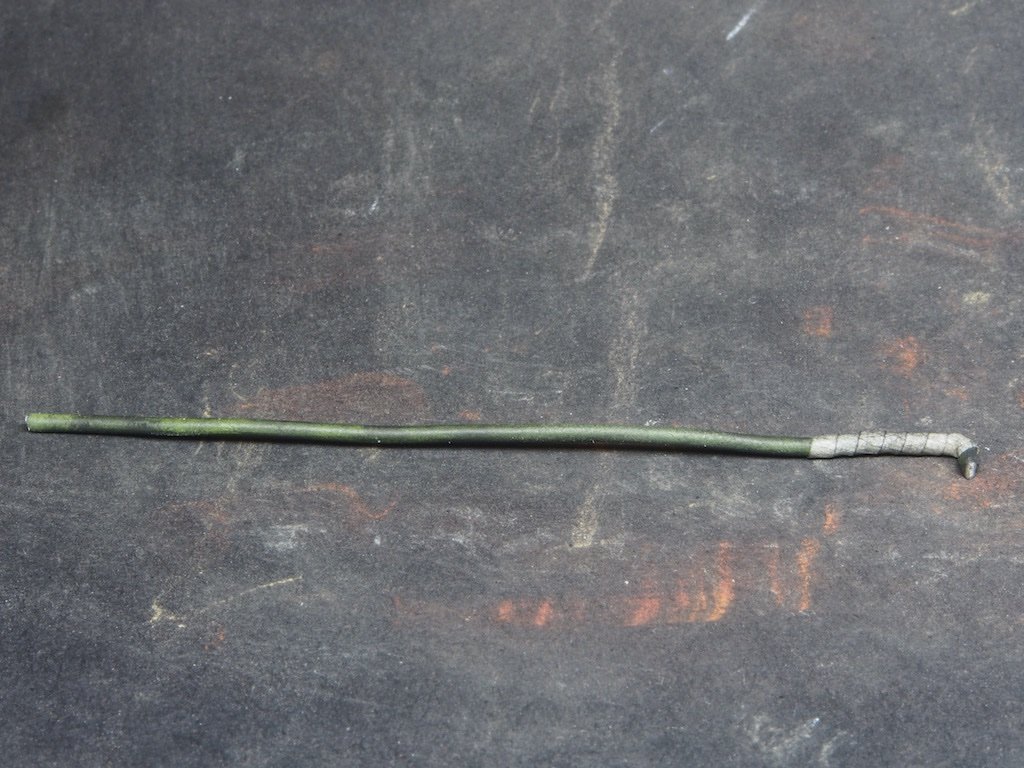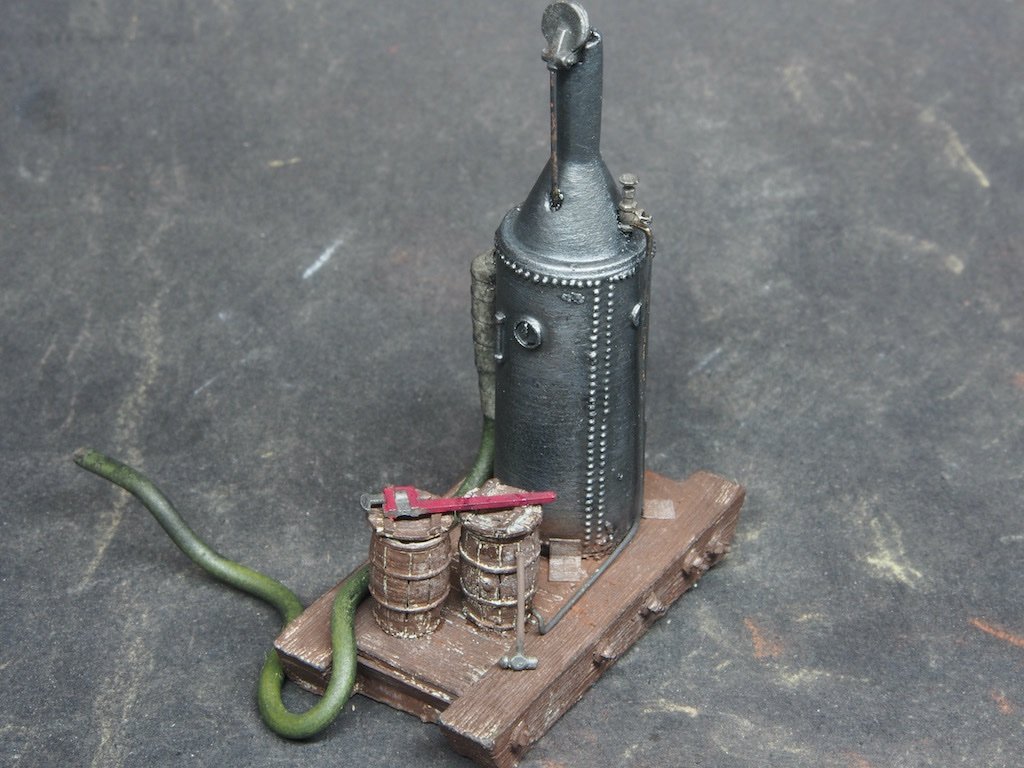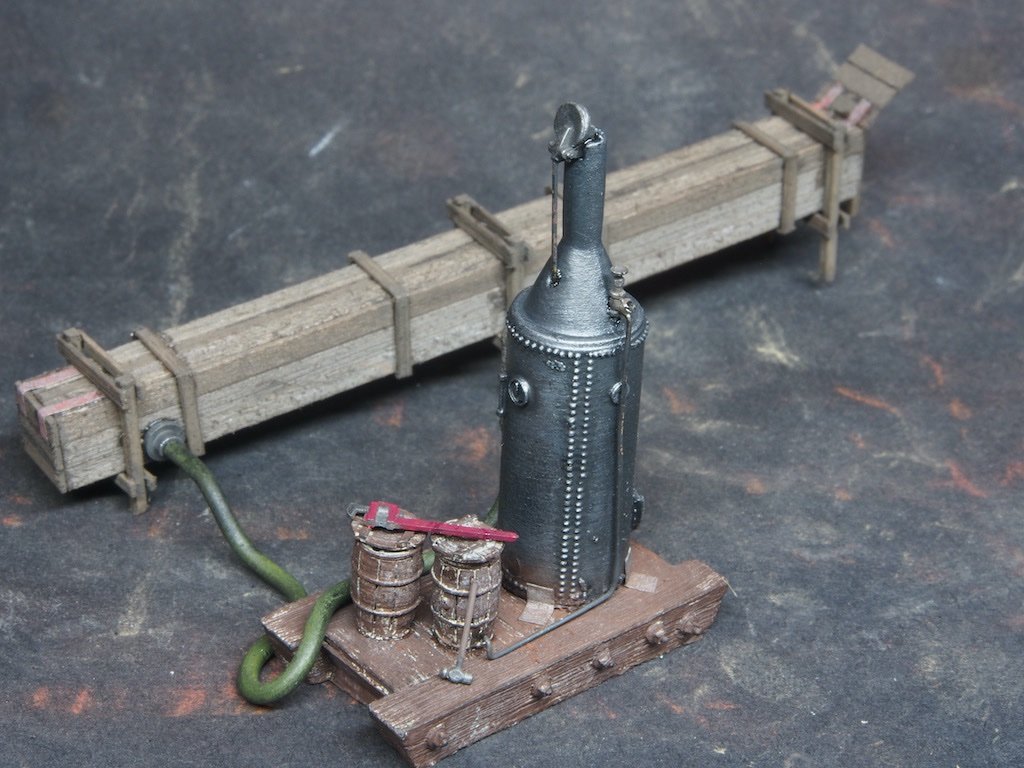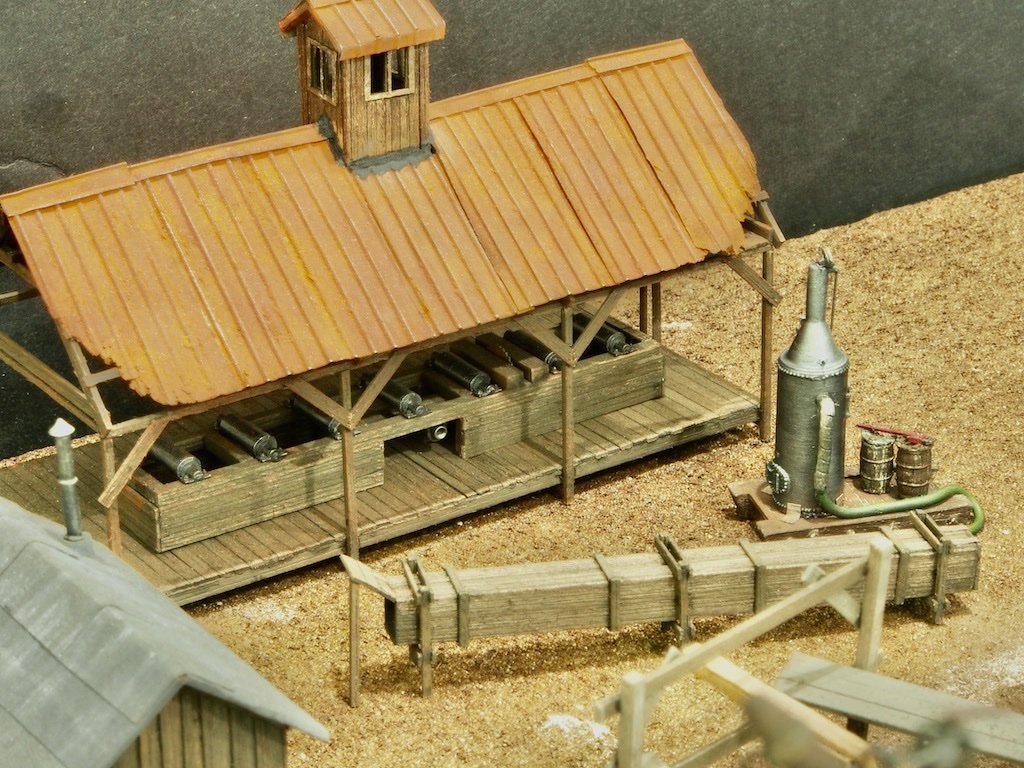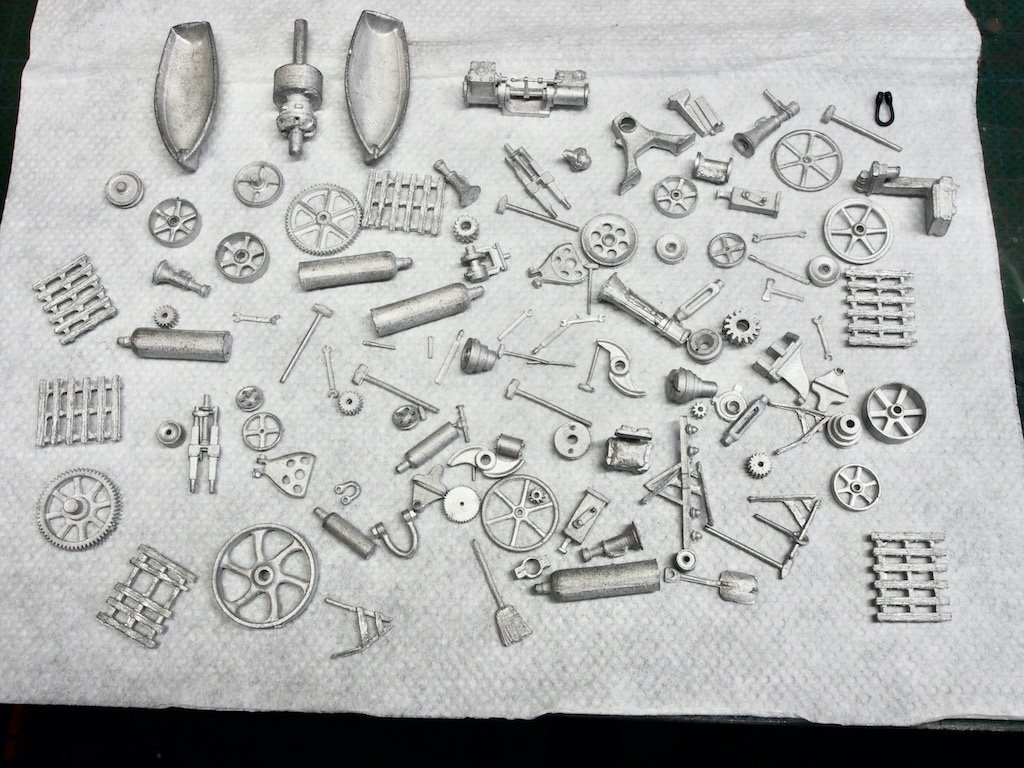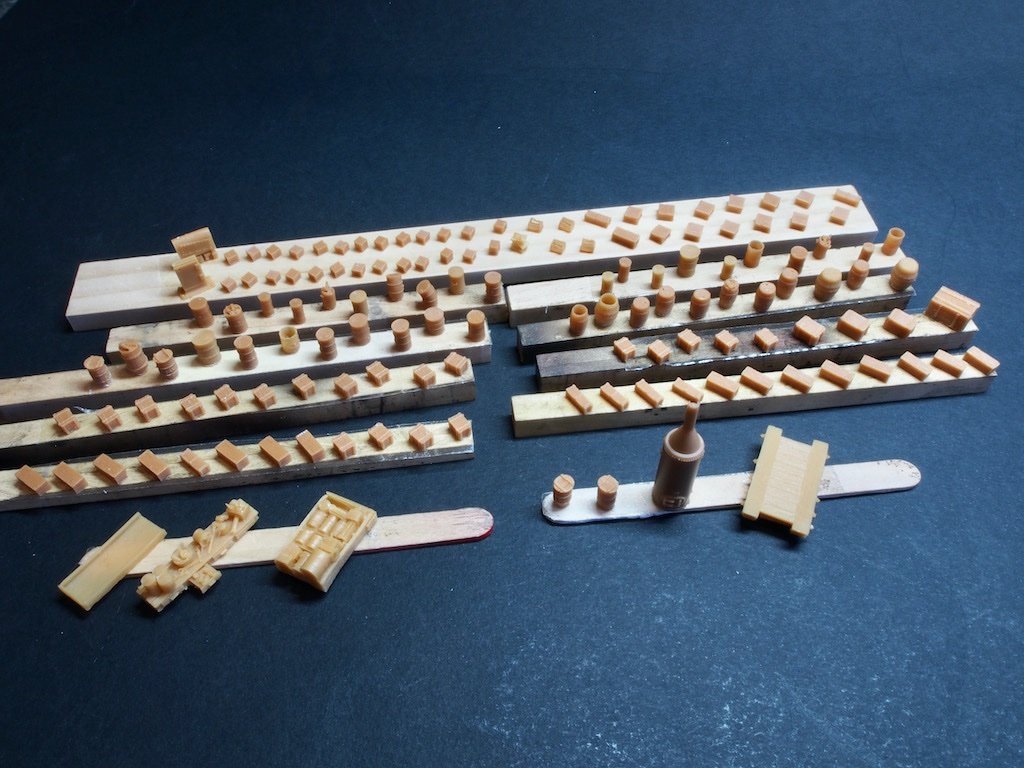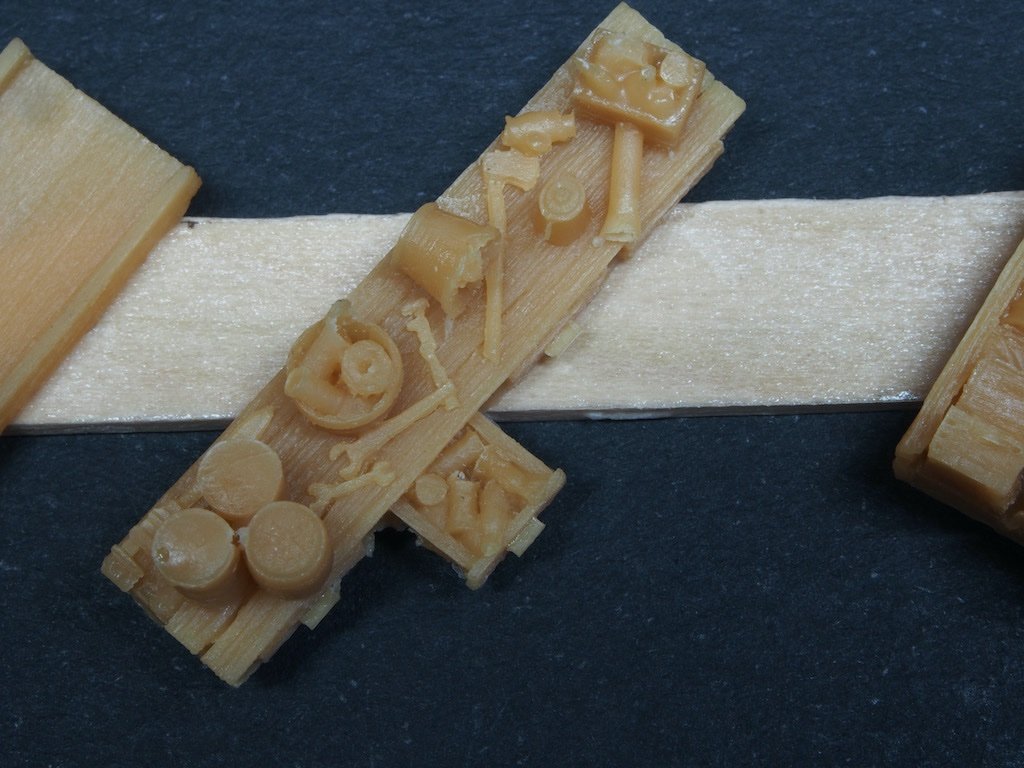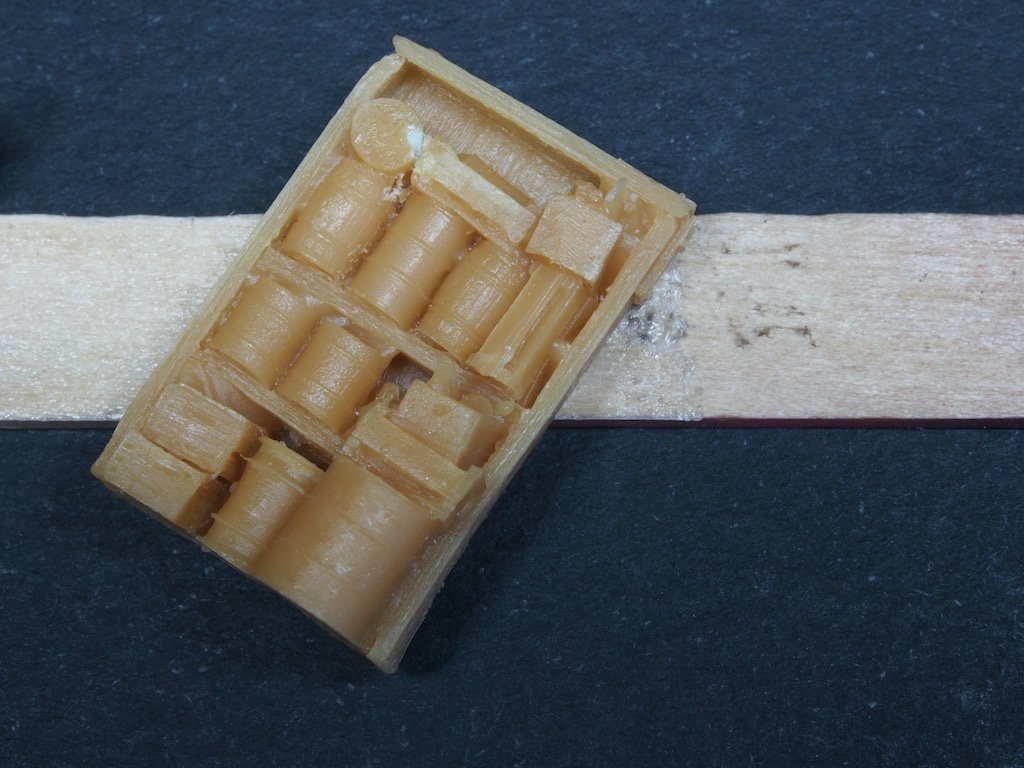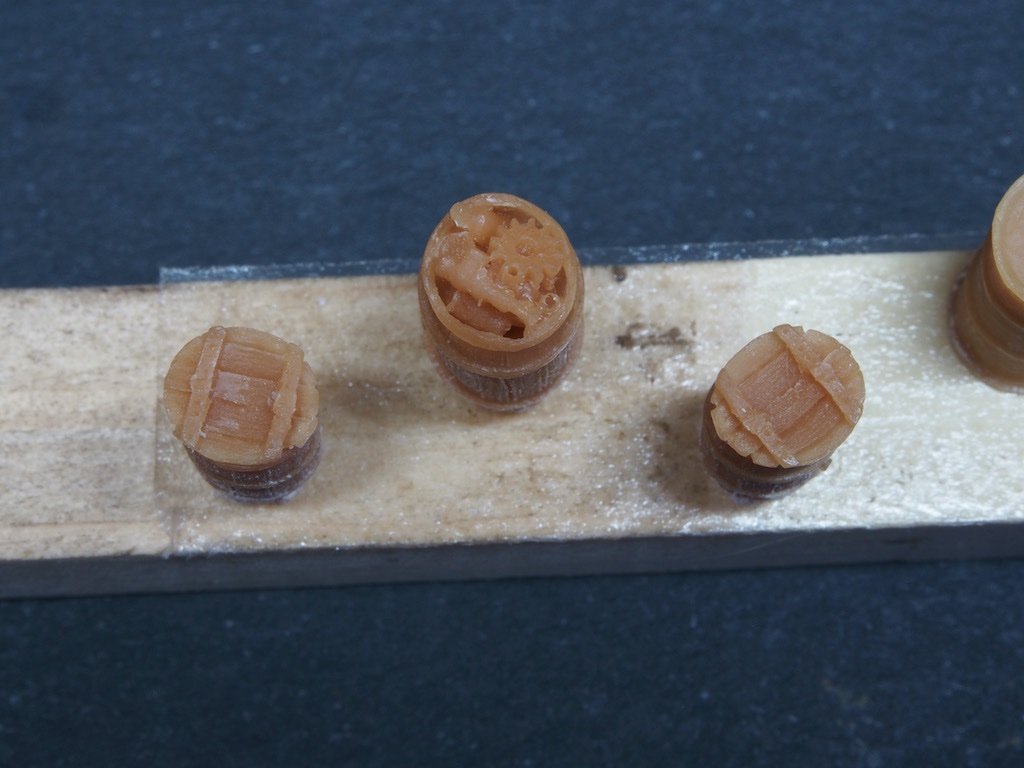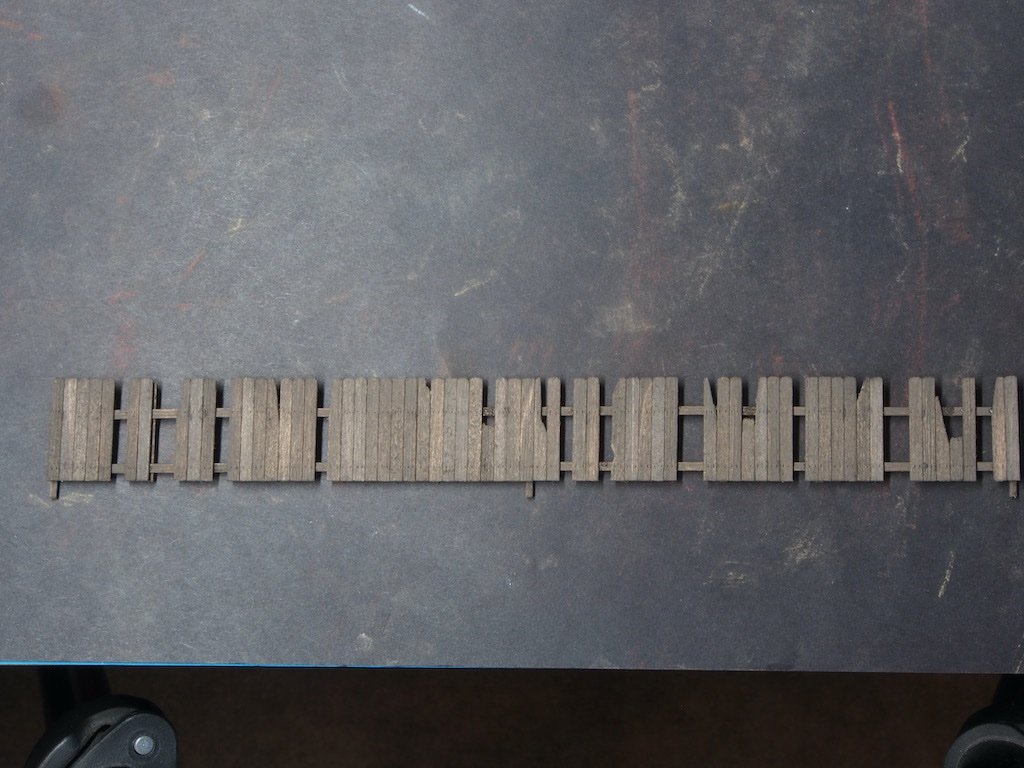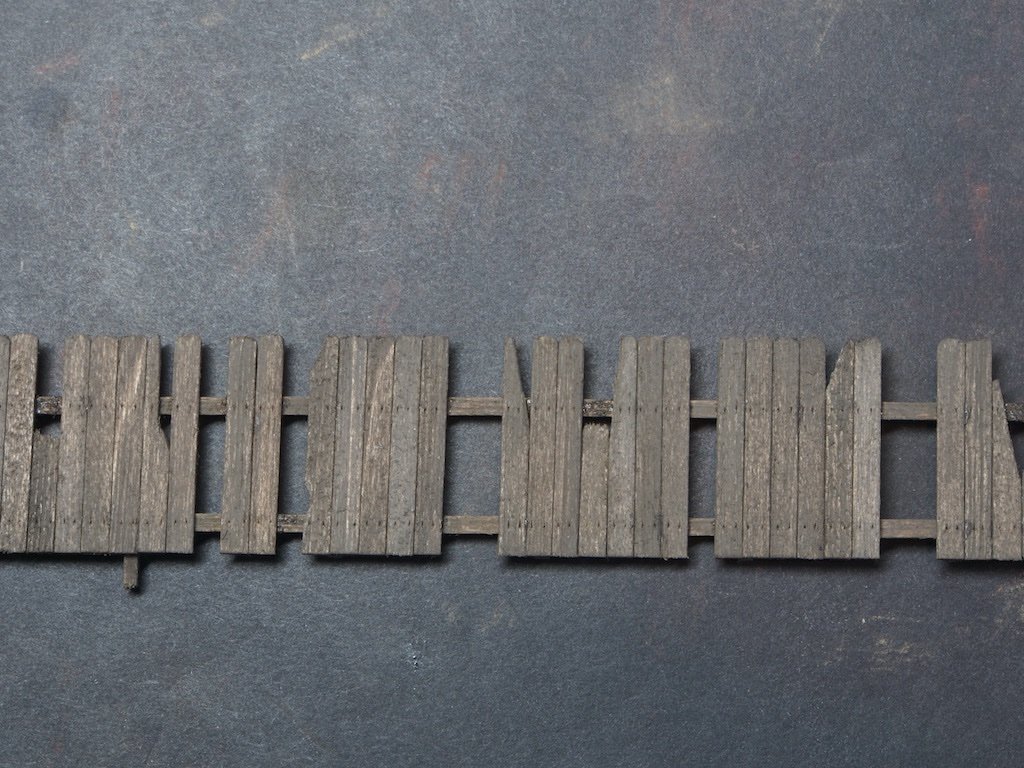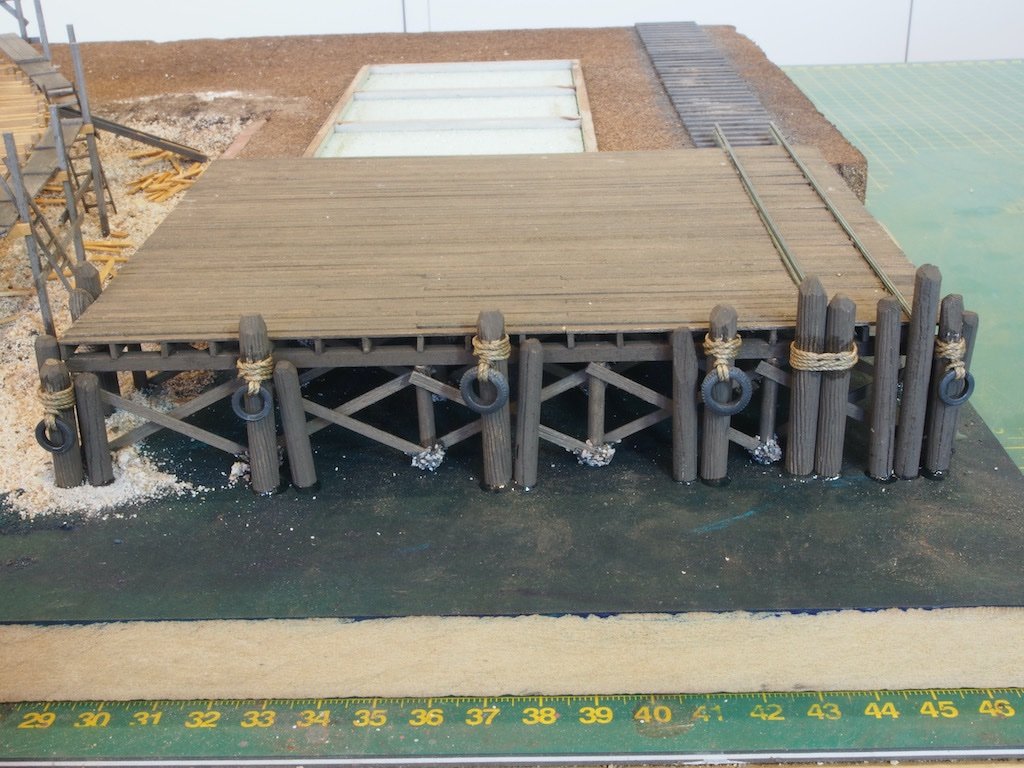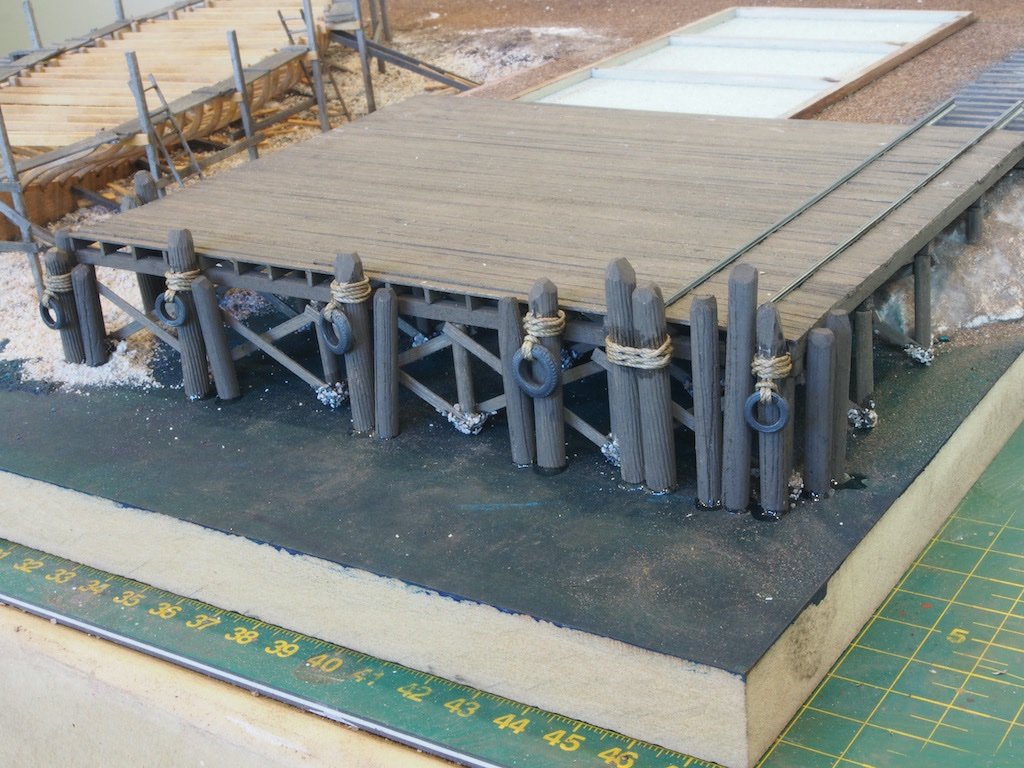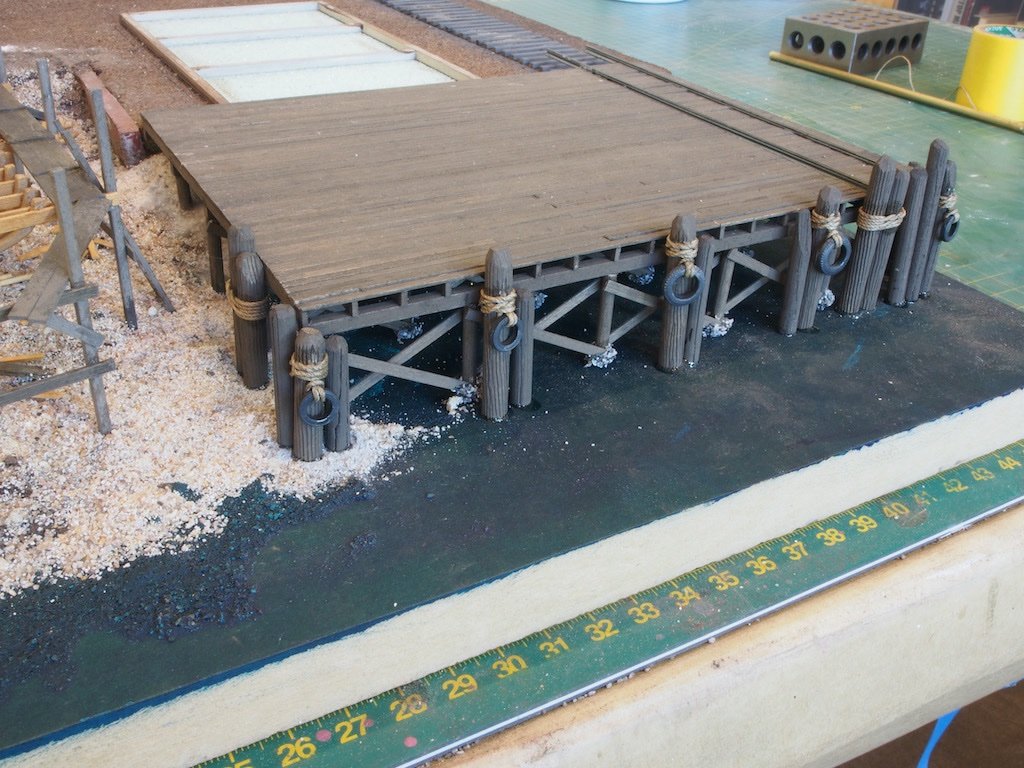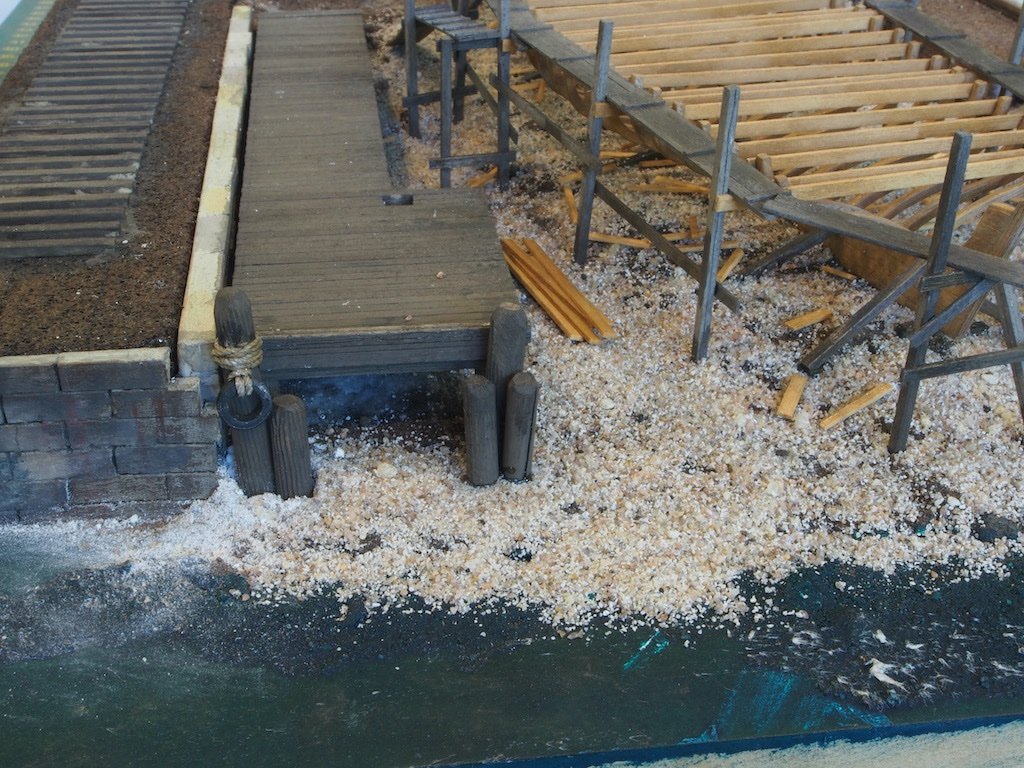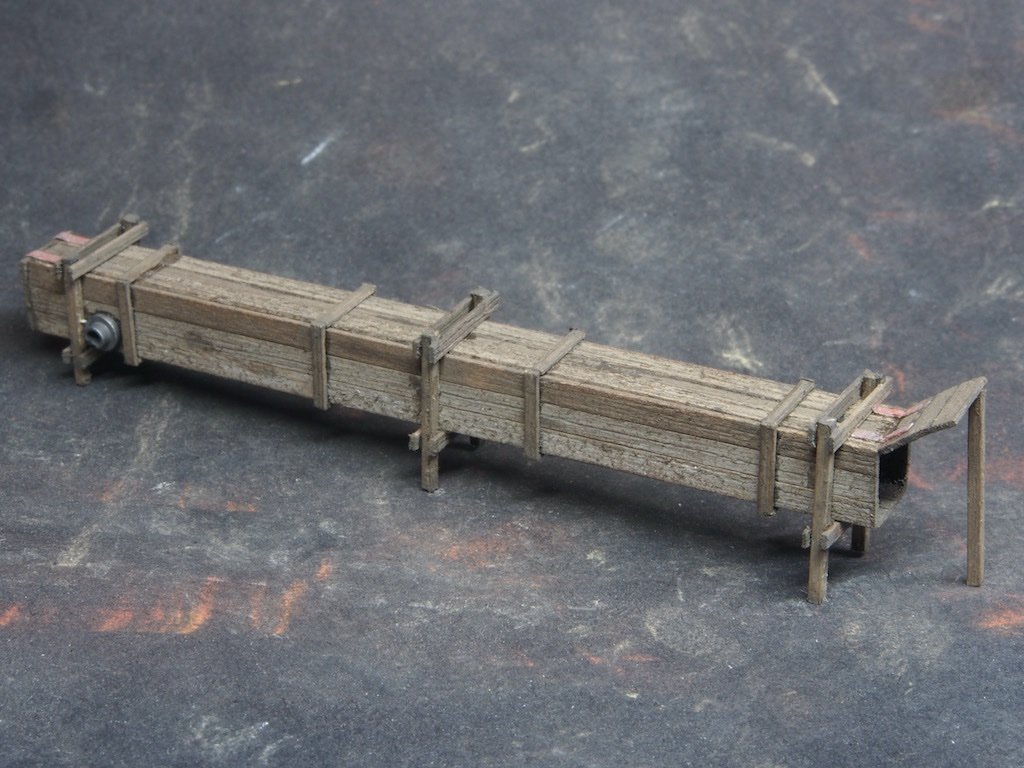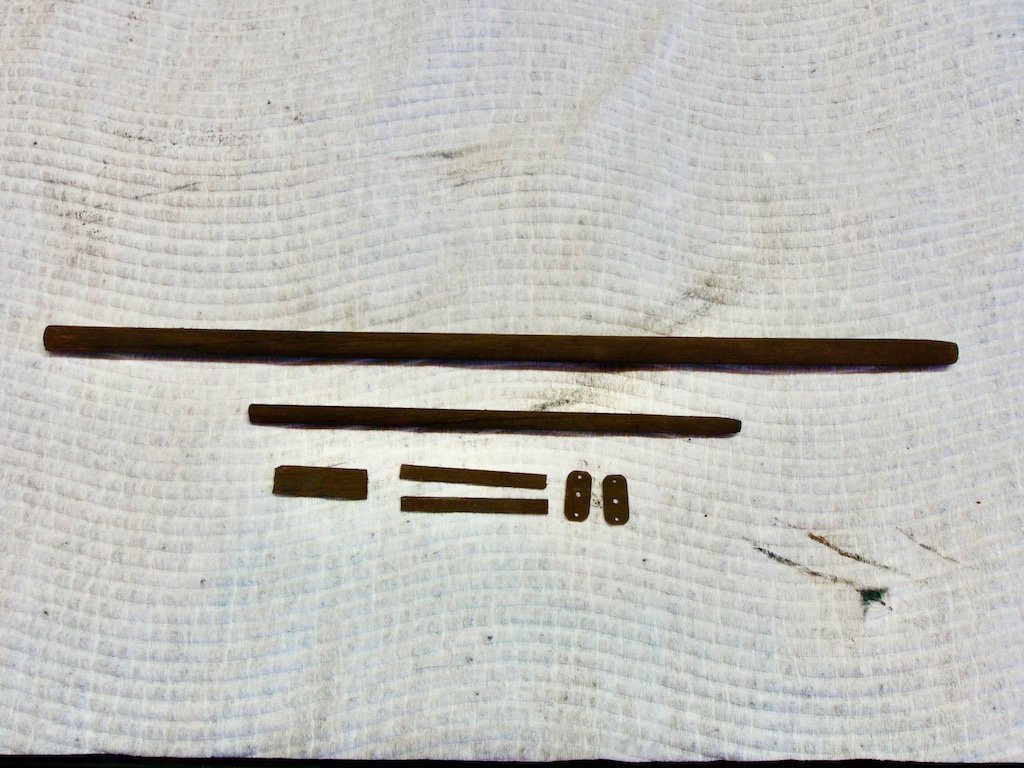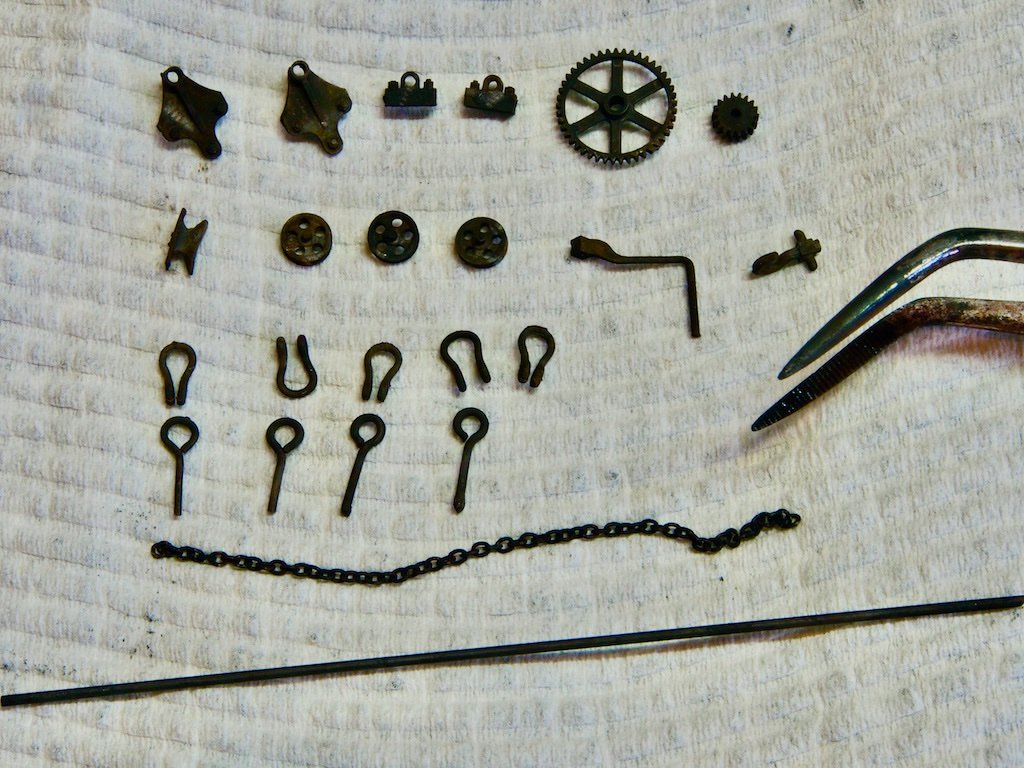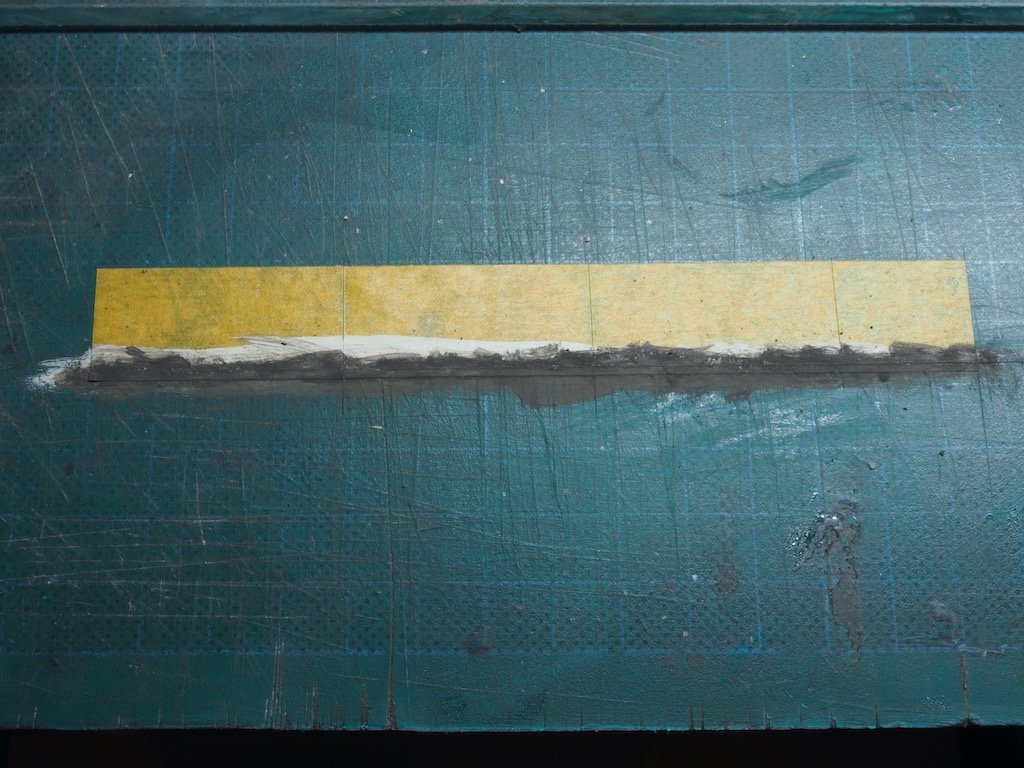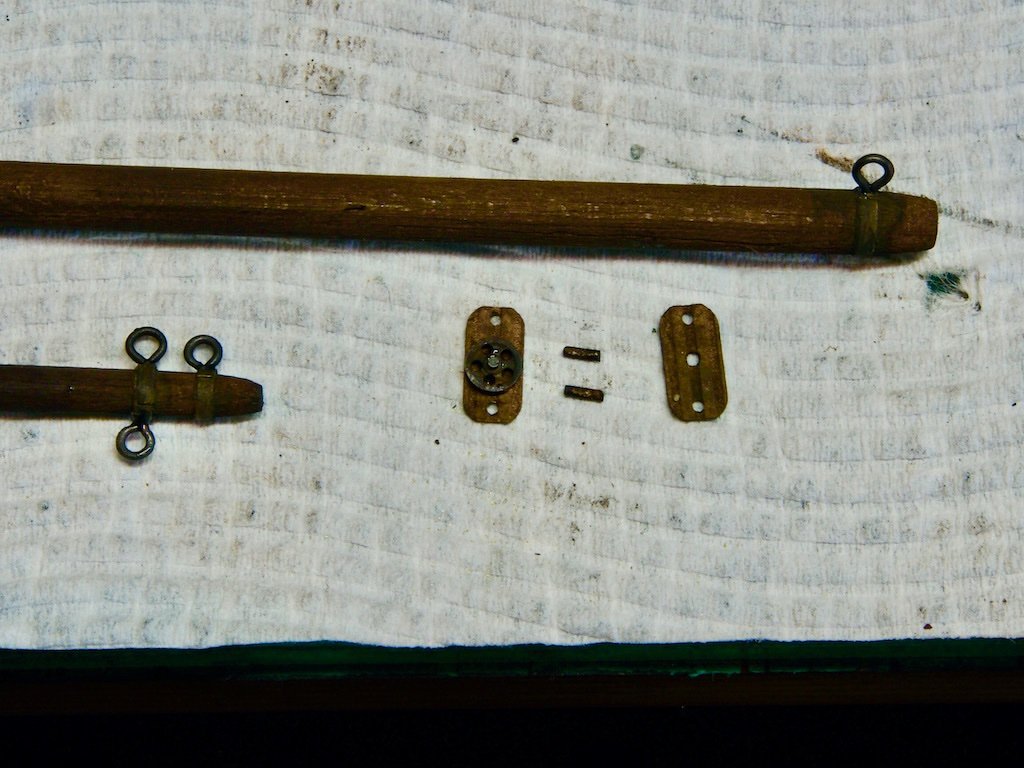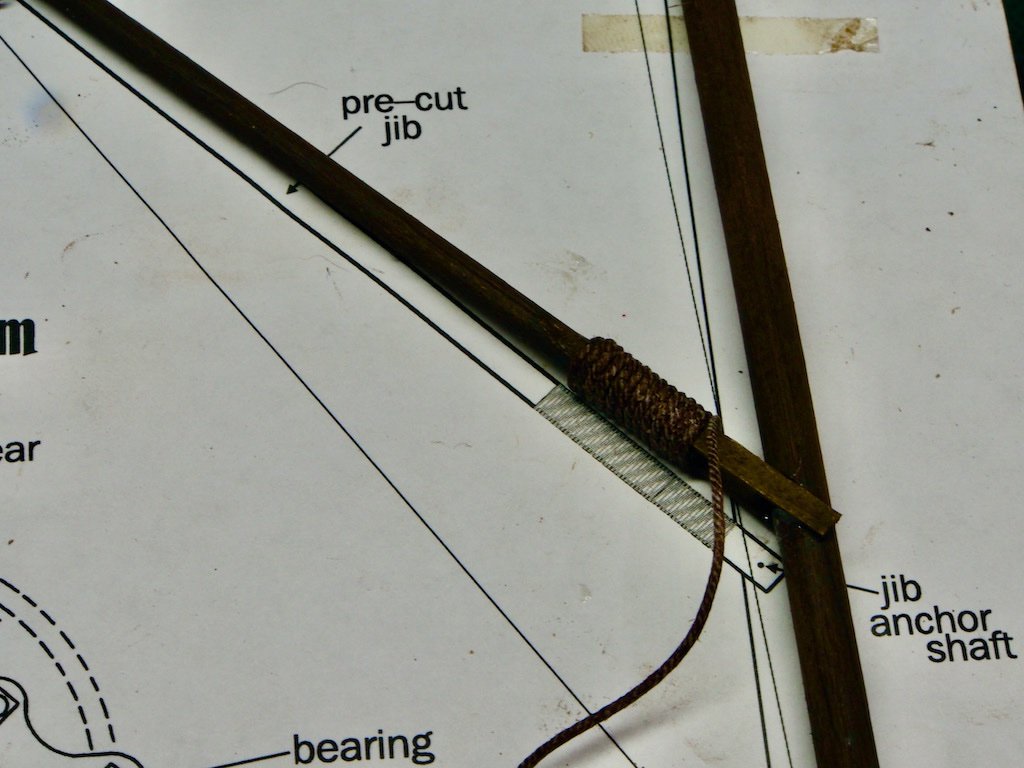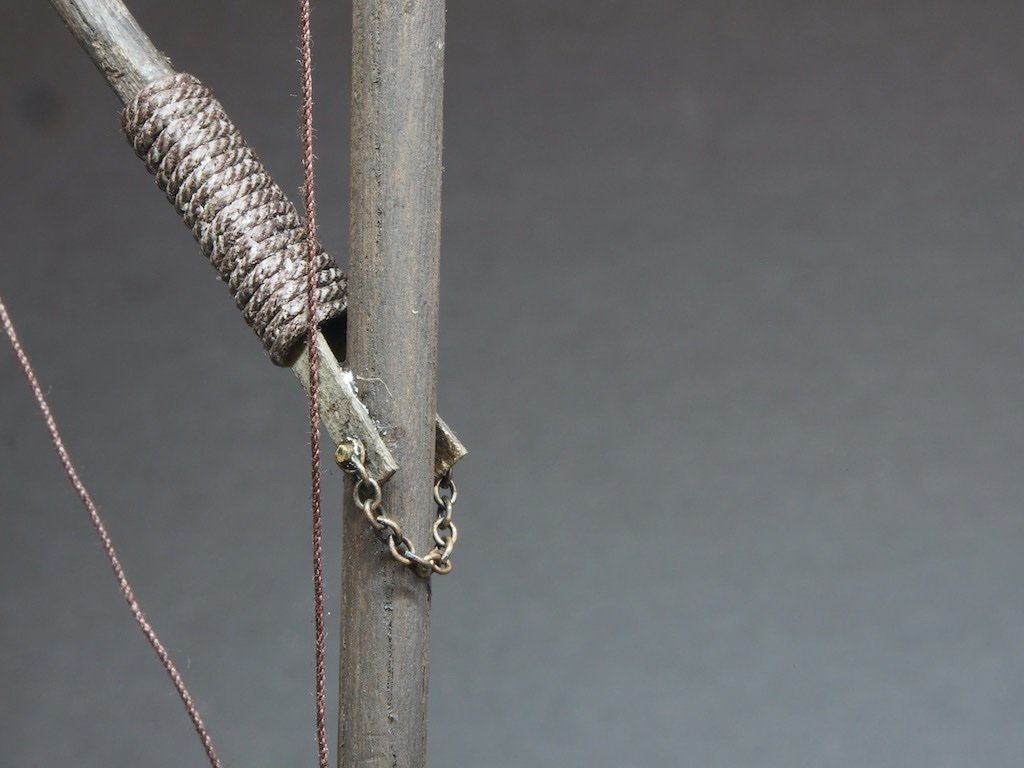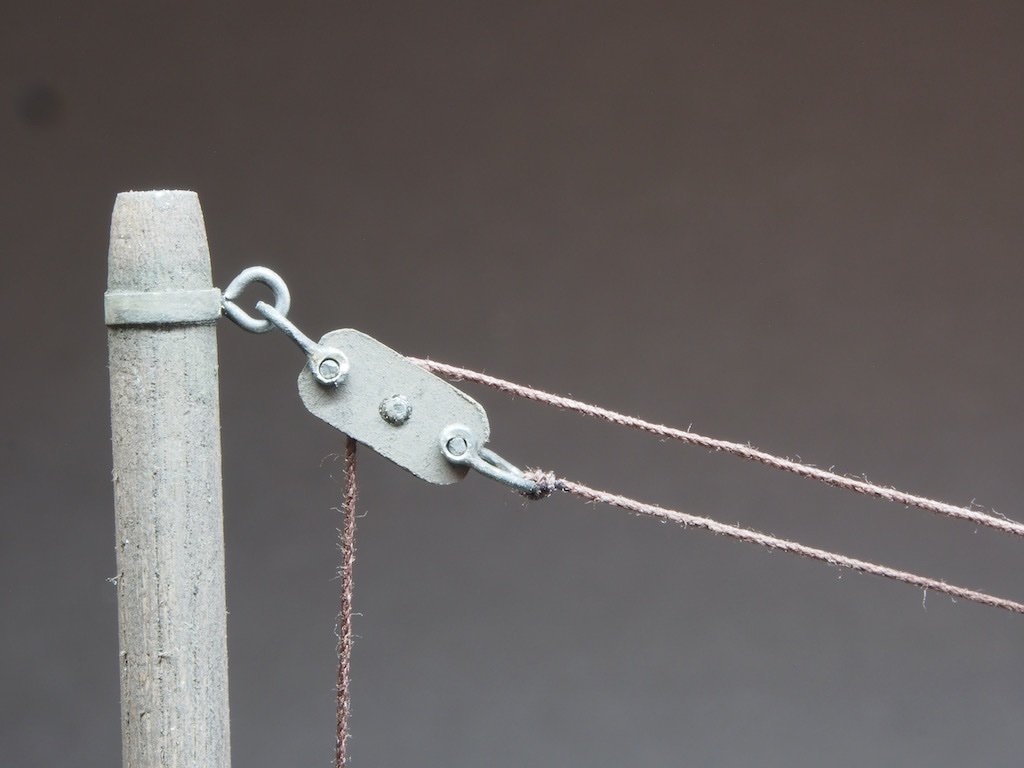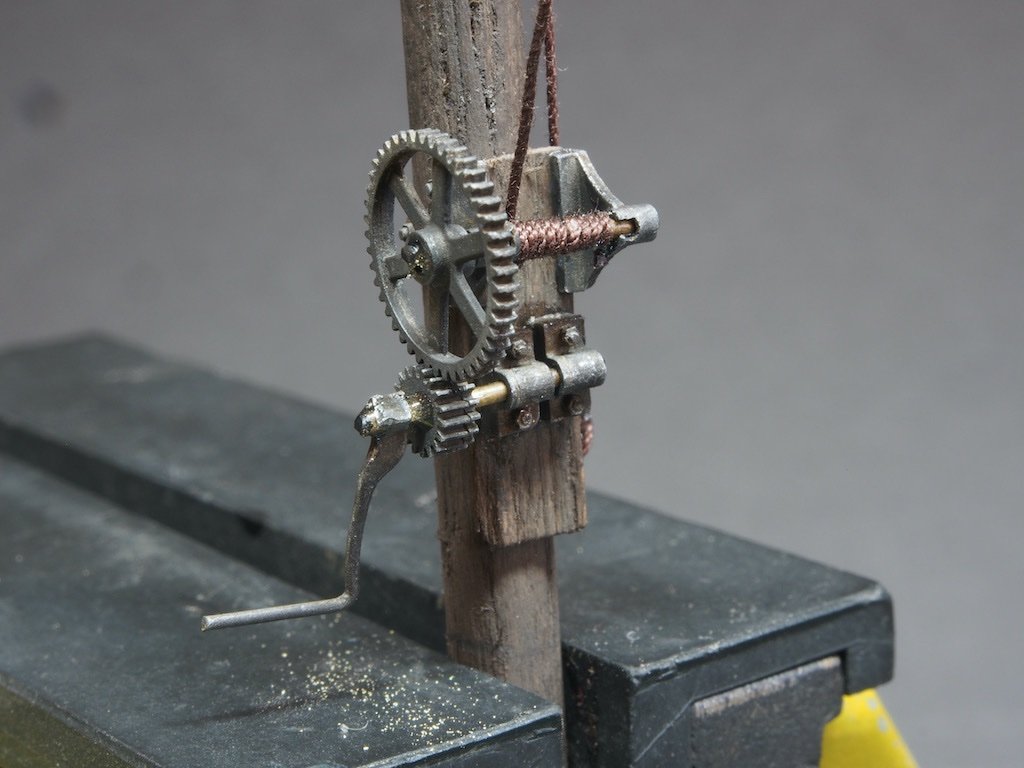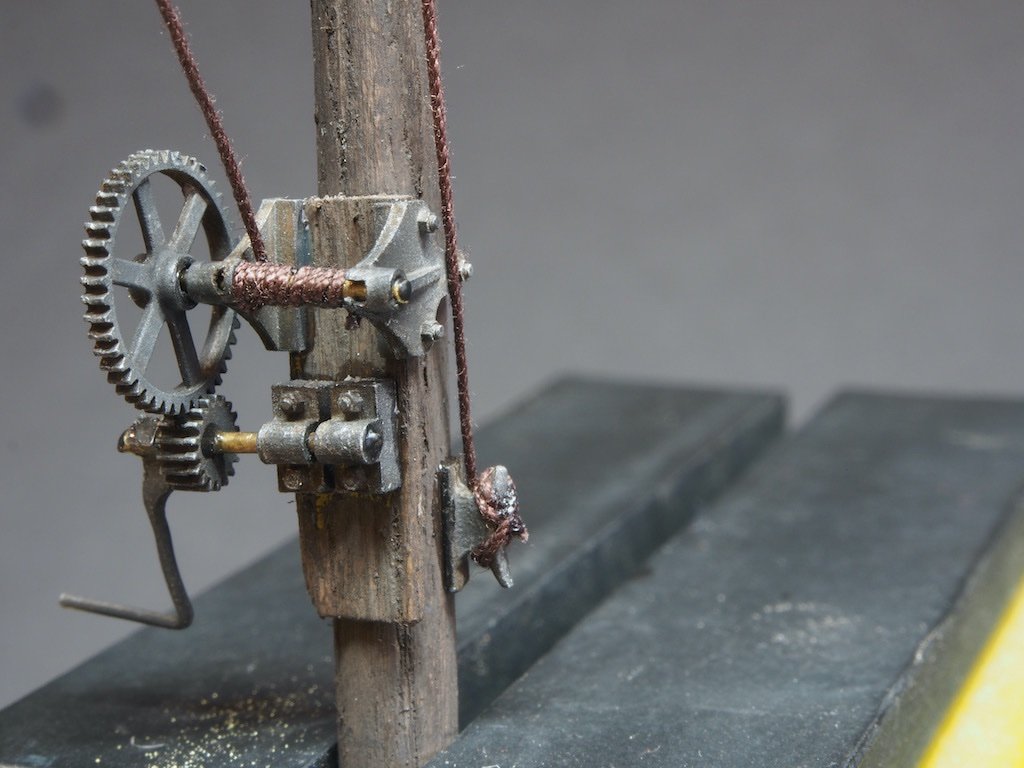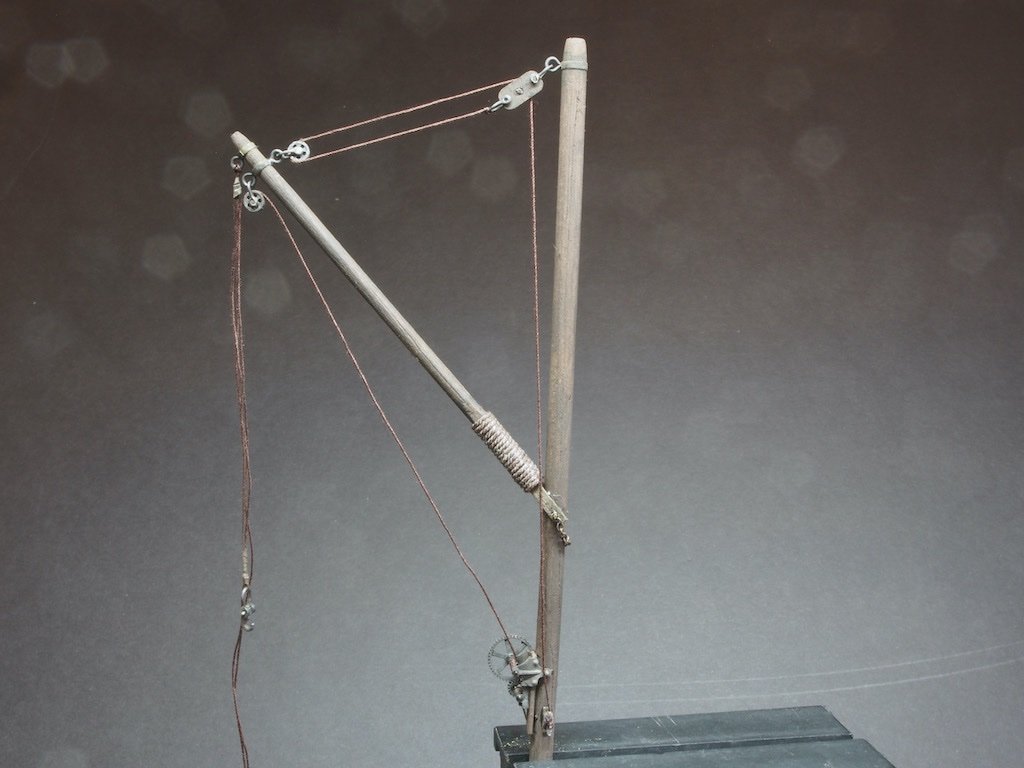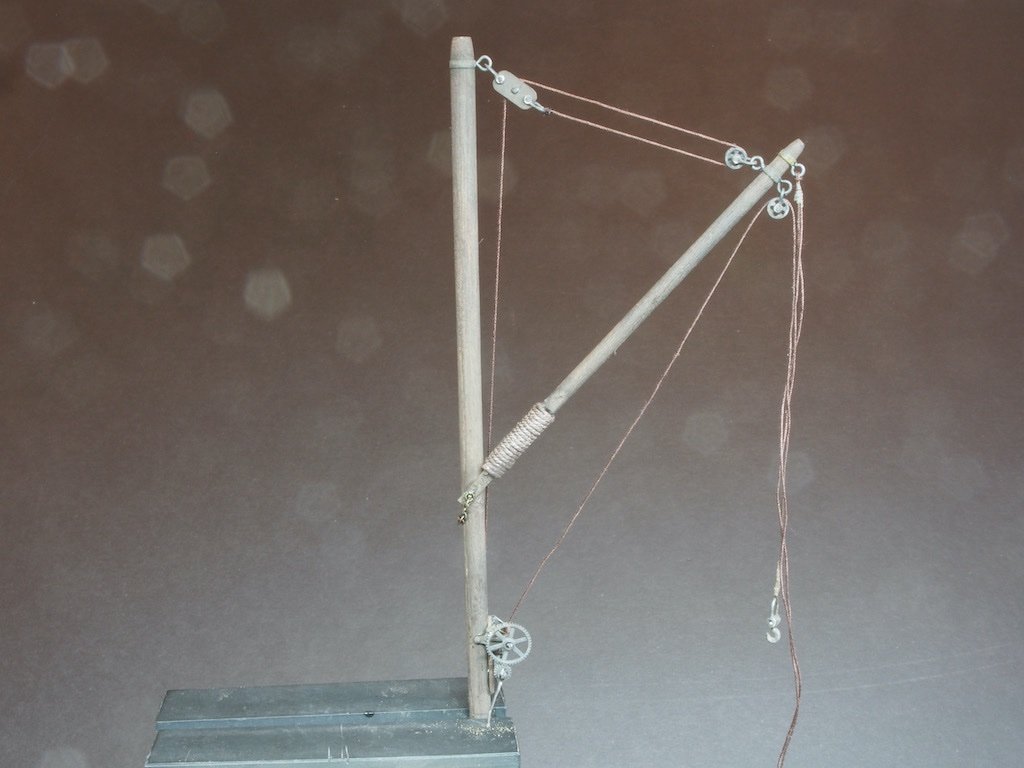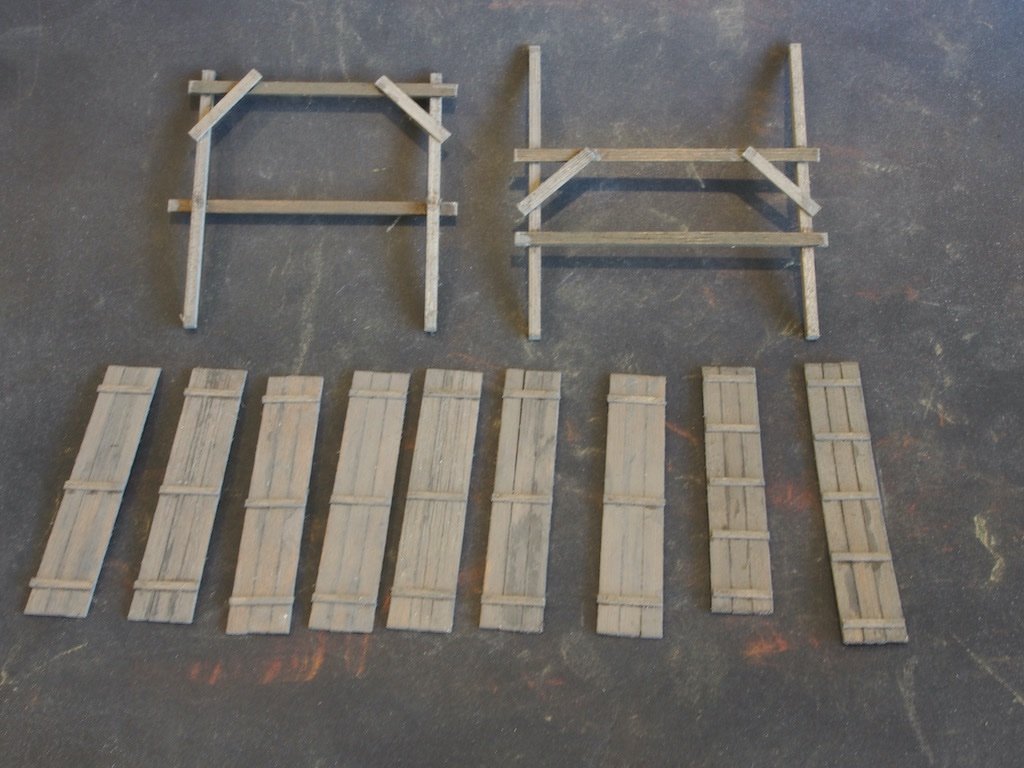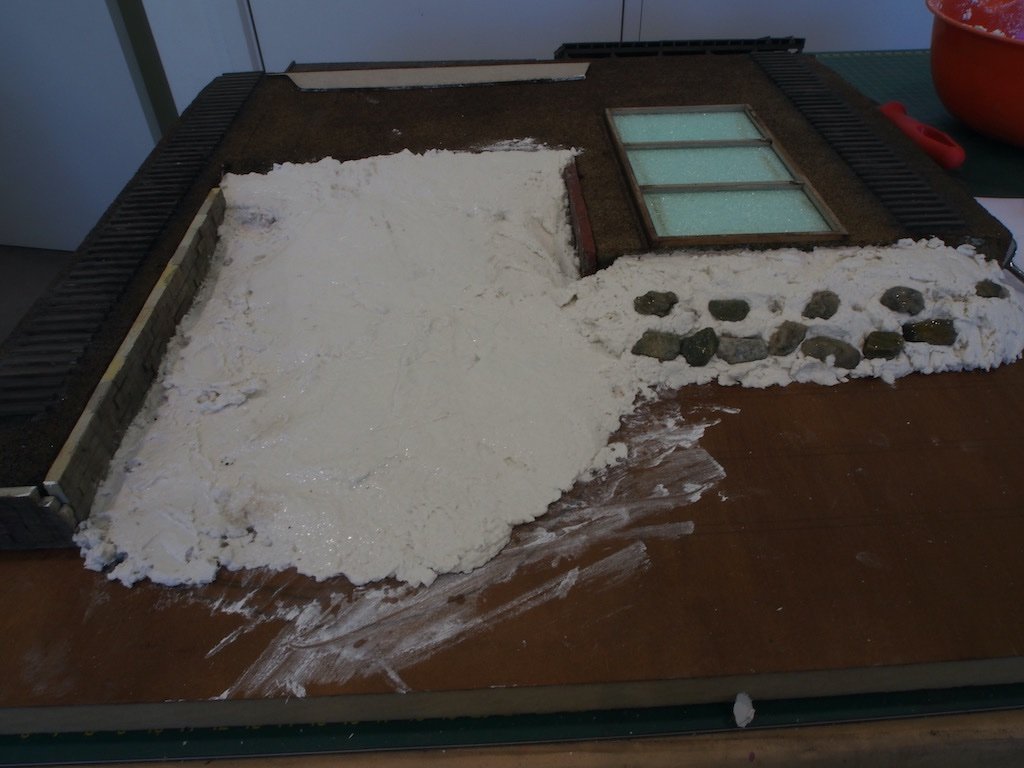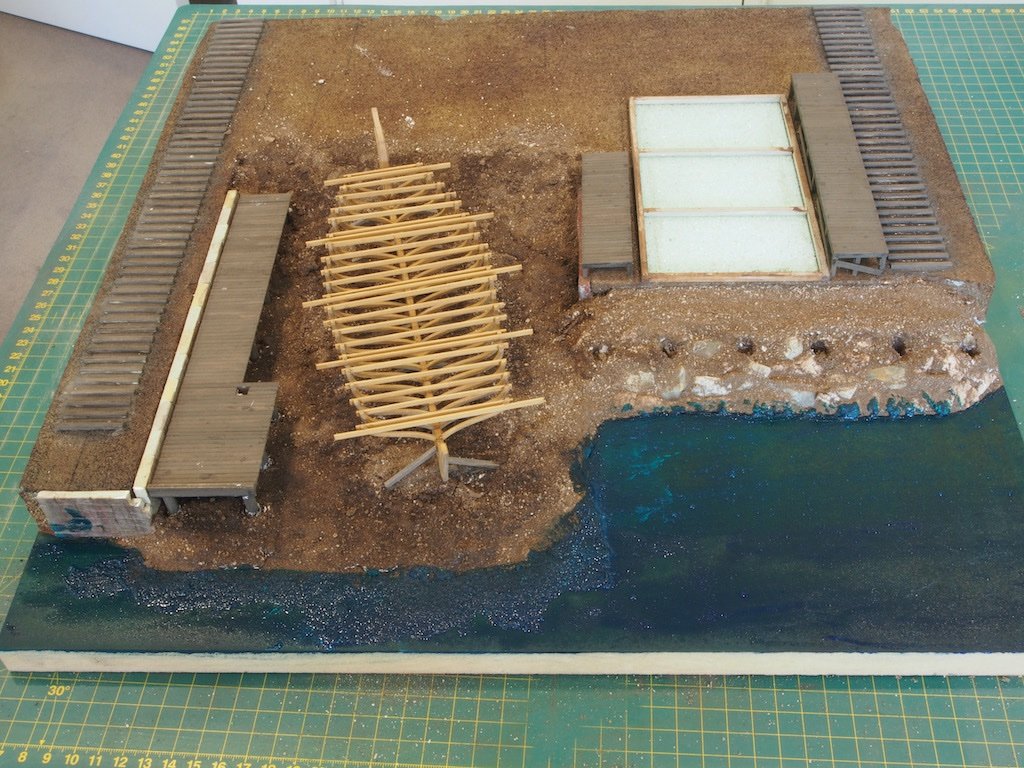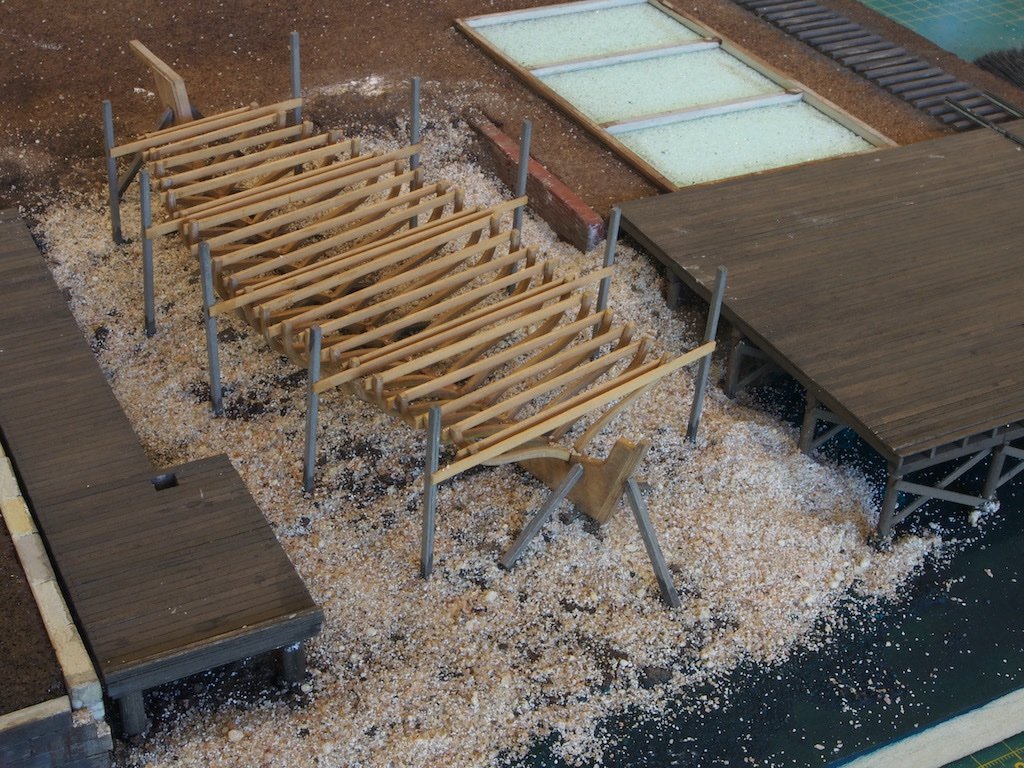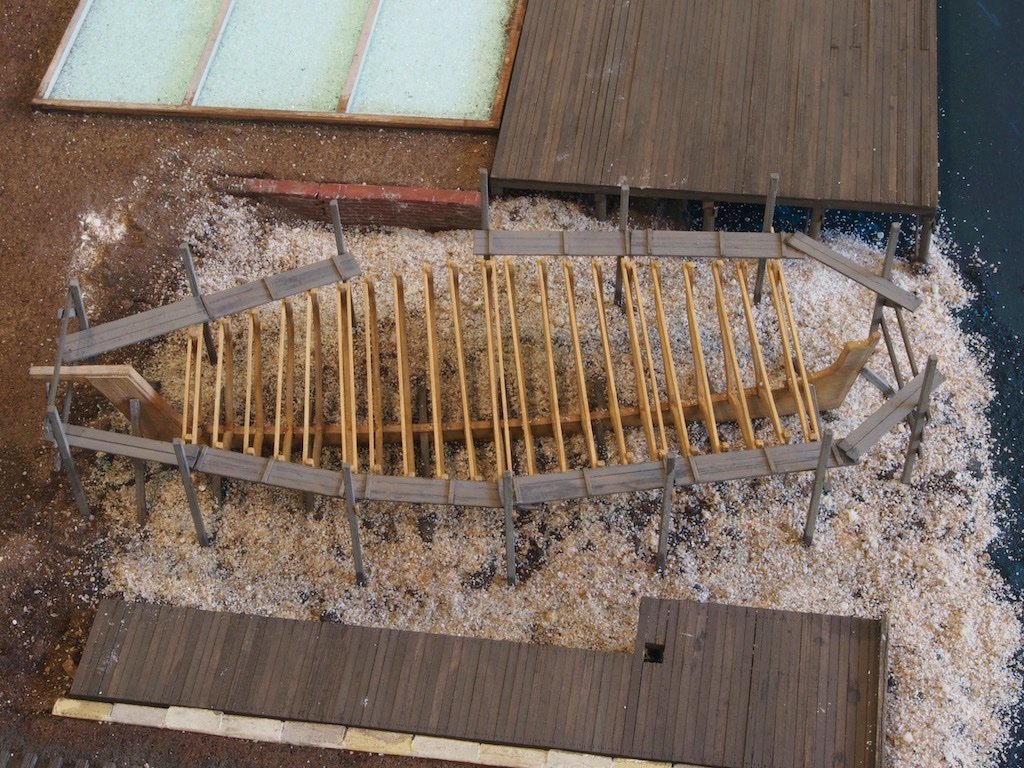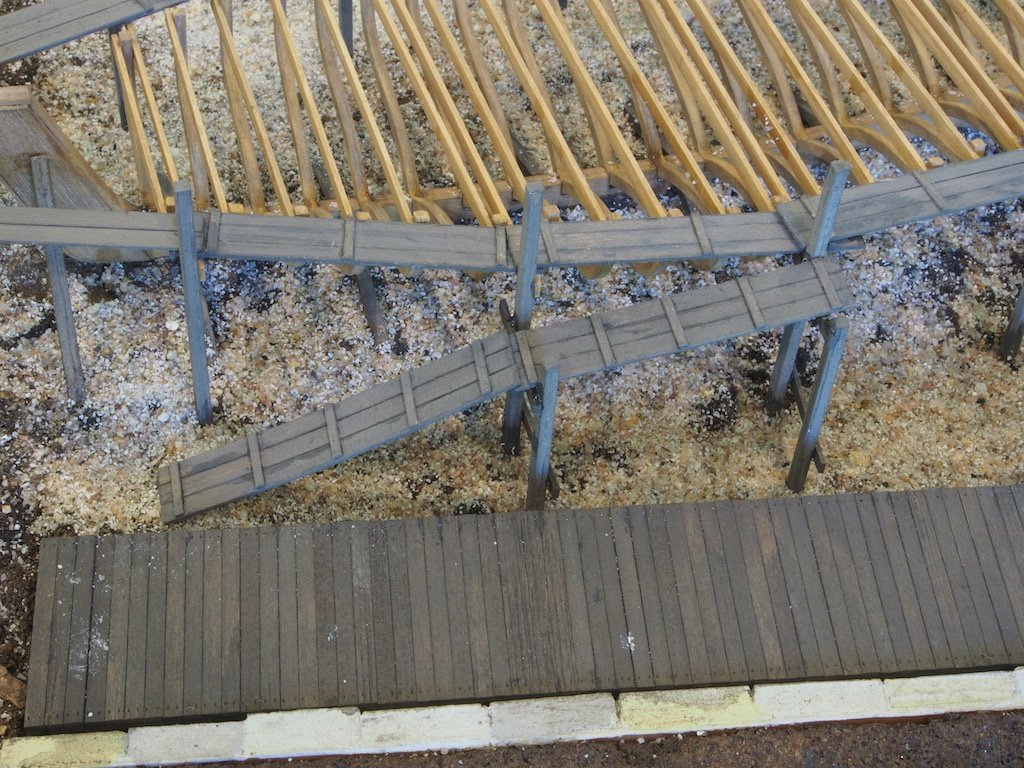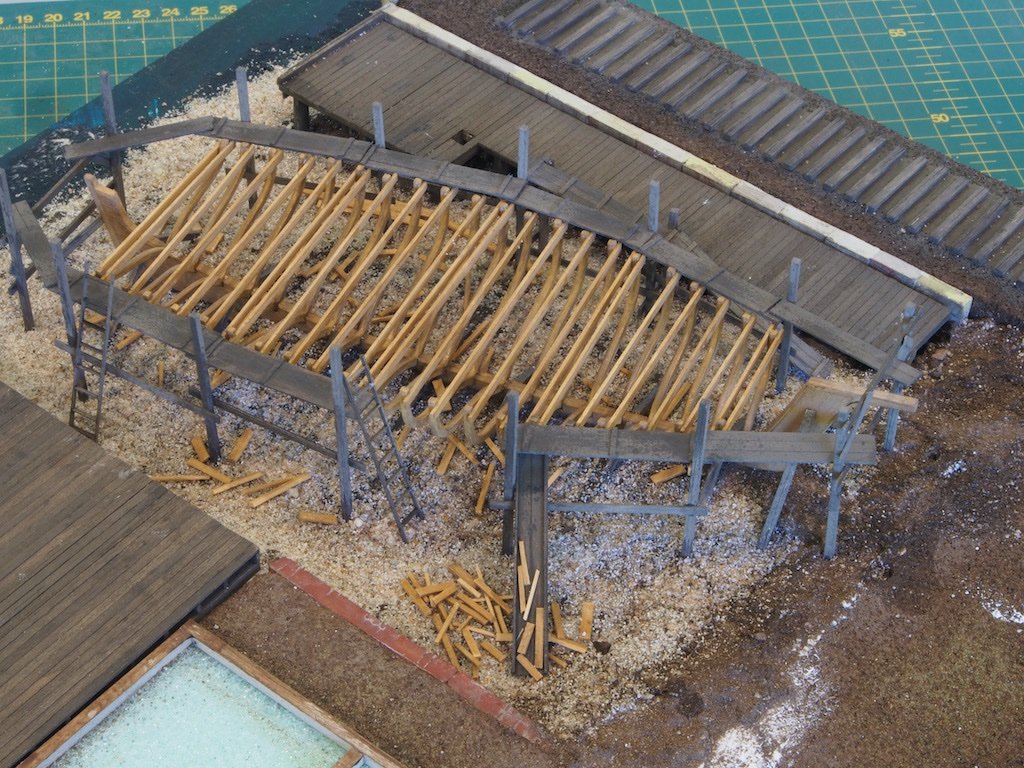-
Posts
4,888 -
Joined
-
Last visited
Content Type
Profiles
Forums
Gallery
Events
Everything posted by gjdale
-

Alfa Romeo Spider Touring Gran Sport by CDW - Pocher - 1:8 Scale
gjdale replied to CDW's topic in Non-ship/categorised builds
The kit instructions are little more than a series of exploded view diagrams. Paul Koo’s instructions take you step by step in a logical sequence and also explain how to do things, as well as giving you a heads-up around some fit issues and how to resolve them. He sells a series of instructional CDs for all of the Pocher kits and the CD contains the written instructions, hundreds of instructional photos of the kit being built, and a stack of reference photos of the real cars. They are a very worthwhile investment. PS There’s a link in my signature block to my build of this kit. You may find that helpful too. -

Alfa Romeo Spider Touring Gran Sport by CDW - Pocher - 1:8 Scale
gjdale replied to CDW's topic in Non-ship/categorised builds
Great to see another of these fantastic models being built. I’m sure that you are aware of some of the fit “issues” with these. If you haven’t already come across him, Paul Koo has produced an excellent set of supplementary instructions that address all of these, along with hundreds of photographs to accompany the “how to” aspects. He also sells replacement parts at very reasonable prices - whatever you are missing, the chances are that Paul will have them. Here’s a link to his eBay store: https://www.ebay.com/str/pocher-philes-forum You can also contact him directly. He is very helpful and easy to deal with. I could not have completed my own version of this kit without Paul’s instructions and replacement parts. Model Motorcars (https://www.modelmotorcars.com/useful-info/favorite-links/) is another great source for “upgraded” parts, but beware - they are not inexpensive, and they are addictive! I look forward to following along with your build. -
Congratulations Rusty - a beautiful model, just as we have come to expect from you. It’s been a real pleasure following your build.
- 642 replies
-
- winchelsea
- Syren Ship Model Company
-
(and 1 more)
Tagged with:
-
Congratulations on finishing a truly fine build Dave - just superb!
- 143 replies
-
Nice work so far Tim - looking good.
- 72 replies
-
- Seguin
- BlueJacket Shipcrafters
-
(and 2 more)
Tagged with:
-
Thanks Egilman for chiming in here - that is exactly correct. But here are some photos, just in case. Take a felt polishing wheel for a Dremel-type tool. Use a single edge razor blade to cut it in half. Now use the semi-circular piece to polish the metal casting BY HAND. These parts were way to small and fragile to go anywhere near a spinning tool. You could attach a handle to it if you wished, as Egilman suggested, but I just held the felt in my fingers. Moving right along... The Castings – Painting the Details There is an excellent video tutorial on the Sierra West Scale Models website that demonstrates an extremely easy, yet highly effective technique for achieving peeling and chipped paint effects on the castings. In summary, Once the base coat of black has been allowed to dry thoroughly (in my case it was left for a couple of days), colour is applied using a selection of AK paint colours, and while still wet the part is dunked in Isopropyl Alcohol (IPA) and then dabbed with a make-up sponge to randomly remove bits of paint. It is left to dry for at least a couple of hours, and then the process repeated if there is a second colour to be added. Once that has also dried thoroughly, the parts are dusted with various rust-coloured chalk powders and given another dunk and swirl in IPA to remove most but not all of the chalk, and left to dry again. That’s it – process complete. Here are some of the resin cast oil drums – I have yet to paint the details of the contents of the one in the centre at the back. The process works equally well on the metal castings of the Acetylene Tanks. Back to painting wooden crates……..
-
Thanks Bob, To answer your question, it gives you a semi-circular shape which simply gives you more options on which part of the felt to use. If you need a sharp corner to get into a crevice, then you have one, as well as both a straight section and a rounded section. No photo to hand, but I think you can get the idea?
-
I think you mean "gateway drug" Hamilton. Beware, these things are extremely addictive! Before you know it you'll be mainlining with a Mill as well.
-
The Boiler With all the castings now having their initial preparation complete, it was time to turn attention back to completion of the Boiler for the Steam Box. The boiler itself is a resin casting, but it has a white metal casting Stack Cap and Valve, along with a brass wire Stack Wire. The boiler was painted with AK 11212 (Gun Metal) and then dry brushed with AK 11210 (Natural Steel) before the blackened and buffed metal parts were epoxied in place. The boiler is mounted on a wooden sled – another resin casting. This was first painted with AK11008 (Grimy Grey) and then dry brushed with AK11110 (Leather Brown). A couple of the tiny hand tools had their handles painted - AK11095 (Dirty Red) for the large wrench, and AK11110(Leather Brown) for the wooden handle of the hammer. In the photo below, you can see part of the toothpick that the sled is mounted on for painting. Two barrels are given the same treatment as the sled (again mounted on toothpicks here). A Steam Hose is then made from a three-inch length of 1.2mm diameter solder. It is painted with AK11147 (Olive Green) and one end is then wrapped in masking tape to simulate the lagging. It was then dirtied up with light dusting of (dry) black and grey chalk powders. The boiler was then epoxied in place on the sled and four “supports” were made from paper, painted with AK11210 (Natural Steel) and then dusted with some (dry) rust coloured chalk powder. The barrels were then epoxied in place and once dry the feed-water pipe was made from some 0.5mm diameter brass wire, blackened and buffed, and epoxied in place between the barrel and the valve on the boiler. The two hand tools were then epoxied in place, and finally the steam hose was epoxied in place on the side of the boiler. Here it is with the steam hose temporarily attached to the steam box. Finally, here it is temporarily in place on the diorama. I had to play with some post-processing adjustments on the photo as the original was very dark. More details will be added to this scene later. Now it’s back to painting all of those casting detail. This could take a while….
-
The Castings There are a great many castings included in this kit, in a mixture of white metal and resin. They all need preparation, so I decided that now was as good a time as any to do the initial preparation. Along the way I decided to count them… Including the few castings that are already in place, there are a total of 174 white metal castings and 147 resin castings. Here is a shot of the remaining white metal castings prior to being “processed”. Some of these parts are extremely small, especially the hand tools! My “process” for the preparation of these parts is to first wash them all in slightly soapy water, then rinse. Next up is an Acetone bath, after which they are not handled by bare hands again. A quick rinse in distilled water, then a 20-minute soak in Vinegar. Another rinse off in distilled water then left to dry before application of Jax’s Pewter Black, applied by scrubbing the part with an old paint brush. Once the part is totally blackened it is dipped in distilled water again and then left to dry. Finally, all parts are gently buffed by hand using a felt wheel from a Dremel that has been cut in half (a tip I picked up from the kit designer). That took a couple of afternoons work to achieve. The resin castings get a scrub in some soapy water and then rinsed. They are then prepared for a base coat by attaching them to various scrap wood “handles” using double-sided tape. Here is an overview of all the resin parts ready for spraying. While most of the resin castings are individual parts, there are a couple of composite castings that pack in an incredible amount of detail – especially when one remembers the size of these. For reference, the castings in the foreground of the above picture are mounted on popsicle sticks. Here is a close-up of the casting of the work bench top (centre casting on the left popsicle stick). Note the open drawer full of “stuff” as well as the clutter on the bench top. And here is the open cupboard right next to it. Some of the barrels and bins are also filled with incredibly details parts, like this barrel full of spare/discarded parts. Although some of the tutorials suggest that castings representing metal should be sprayed black and those representing wood should be sprayed a “wood” colour initially, the kit designer in his own tutorial suggest spraying all parts black initially, regardless. I took that advice and sprayed all of these parts with Stynlyrez Black Primer using my airbrush. Another afternoon’s work….
-
Looks like it all worked out in the end Tim, but I don’t know why you shied away from using fibreglass. I too was terrified when I first used it, but by following the advice I found on another site (RC Groups), I found it was actually quite easy. It might have actually saved you some time/effort. But, all is well that ends well as the saying goes. 🙂
- 72 replies
-
- Seguin
- BlueJacket Shipcrafters
-
(and 2 more)
Tagged with:
-
Just a thought Keith, but rather than printing across many small sheets and having to stick them together (with inherent risks to accuracy), why not take your PDF to a local plans printing shop and ask them to print on a large format paper? I don’t think the cost would be prohibitive, particularly taking the benefit into consideration.
-
A minor update... The Wooden Fence As the kit instructions remind us, fences create a barrier that allows us to define a scene. This is a simple board on board construction using the provided template to define the overall dimensions and placement of key components – the posts and rails. The posts are made from 3/64” square stripwood, and the rails from 0.020” x 1/16” strips. Individual boards of 0.02” x 3/32” are then applied after applying plenty of texture, splits and cracks. I forgot to take any in-progress photos, but here are a couple of completed shots. Overall view. And a close-up of the mid-section. The fence is now set aside for later placement on the diorama. The Bumper Pilings The bumper pilings are made from dowels. Unfortunately, there did not seem to be enough dowel of the right diameter (3/16”) provided in the kit to complete this task, so I supplemented the kit stock with some from my own stash. The latter were slightly larger in diameter and of a much harder wood. The harder wood made imparting grain much harder, and for this I used the edge of a saw blade for an exacto knife. Tyres are provided in the form of white metal castings which are blackened, buffed, painted and chalked before being attached. I did not like the look of the provided cotton string, and there was not enough for the task anyway, so again I substituted from my own stash for this. Again, I did not take any in-progress shots, so here are a few of the completed pilings. I tried to follow as closely as possible the distribution/layout shown in the example in the instruction manual, including deliberately leaning some of them. The main dock pilings. And the Barge Derrick Dock. The Steam Box The steam box was used for softening the planking, making it easier to bend to attach to the hull. Steam from the boiler was pumped into the steam box and a little while later, it was ready to go. This provides an excellent opportunity for creating a scene that tells a story within a story. The actual construction of the steam box is very straight forward with a solid core of ¼” square stock being clad in some .020” x 3/32” stripwood and 0.020” x 1/16” stripwood. Wrap braces are made from more of the 0.020” x 1/16” stripwood and applied. Finally, the legs and braces are made up from 3/64” square strips for the legs and 0.020” x 3/32” strips for the braces. Thin paper strips are used to create the hinges on the doors and a small white metal cast hose ring / inlet is blackened and buffed before being epoxied in place. Again, no in-progress shots, but here is the completed Steam Box – 3 ½” in overall length. Next up will be the boiler to accompany the Steam Box.
-
Thanks Glen and also once again for of the "likes". The Barge Derrick At first glance through the instructions, the Barge Derrick would appear to be a fairly simple construction. However, it proved to be a quite challenging element of the overall kit. The barge derrick is made up of a number of wooden parts and quite a few cast white metal parts – some of the latter being both tiny and rather fragile. First up, we gather the pre-cut wooden components – the mast, jib, the laser cut wooden block components, and a couple of wood strips – and grain and stain them after imparting a slight taper to the outer ends of both mast and jib. Next, we search through the dozens of tiny white metal castings to identify and extract the ones we need for this assembly. These are then cleaned and chemically blackened. These include the bearings (x2), pillow blocks (x2), gear wheel, pinion, cleat, pulley wheels (x3), crank, hook, clevises (x5) (I would call these shackles), eyelets (x4), length of chain, and 1/32” diam brass rod. In the picture below, I have included the tips of my tweezers on the right-hand side as an indicator of scale. The very first issue I had was losing the tiny pinion gear while cleaning the parts – it pinged off the end of the tweezers and fell straight through the hole in the space-time continuum, never to be seen again. This was unfortunate, as this particular piece was a unique shape. Luckily, I was able to substitute a very similar piece from the additional castings and only the kit designer will ever know the difference! Next, we are instructed to lay a piece of masking tape on the bench and colour it with a little Polly Earth (I used AK 11008, Grimy Grey) and some brown chalk powder. A thin strip about 1/16” x 1 1 /2” is then cut off – we need a few of these, so they were all made at once. I diverted from the sequence in the instructions a little from here on, just to keep the workflow going. The next step was to wrap the tape around the top end of the mast and then drill a hole for an eyelet to be epoxied in place. Two more strips and three eyelets are also added to the outboard end of the jib. One of the pulley wheels is epoxied to the inside of one half of the laser cut block and once dry, the other half of the block is epoxied in place and two very short brass pins are cut from the length of rod and inserted through the holes in the end of the block. Two wood strips, each about 1” long are then attached to the inboard end of the jib, with about half their length overhanging the jib end. Once dry, we are instructed to wrap these strips with the provided waxed thread for about ¾ of their length, leaving about ¼” of the strips exposed. These are what is used to attach the jib to the mast. This is where I ran into two problems. Firstly, the length of thread provided in the kit is insufficient to wrap the length directed. This was no big deal – I have a sizeable stash of high-quality (Syren) rigging thread for my ship modelling, so it was easy to find some of the same thickness, run it through some wax and proceed. The slightly bigger issue is that if the wood strips are wrapped too far, they will not expand far enough to fit around the diameter of the mast (which is thicker than the jib) – in fact, it snapped the wood strips on my first attempt. Again not a huge deal – I simply replaced the two wood strips and this time wrapped them in thread only as far as the end of the jib. I used a little CA to secure the wrapped thread at this point and left a long ‘tail’ hanging until after the jib was secured to the mast. The provided template was used to position the jib and set the correct angle. It was epoxied in place to the mast and left overnight to fully cure before completing the wrapping with the thread. Once cured, two holes were drilled through the wooden strips and into the mast and short brass pins were epoxied in place to accept the preventer chain. Here I ran into another issue. The links in the provided chain are too small to fit over the brass pins. Although the instructions advise us to use the ends of our tweezers to force the link open sufficiently, I was unable to achieve this. No drama – back into the ship modelling stash and after a quick rummage, came up with a length of chain with ever so slightly larger links. Problem solved. The next issue I encountered around this time was the softness of the white metal castings – specifically the clevises/shackles. The first thing needed to be done with these is to use a drill bit or reamer to open the holes sufficiently to take the axle pins of the pulley wheels, or the brass rod (both are 1/32” in diameter). I managed to destroy two of the five in the process. I was able to find one more of the same size among the myriad of castings, and also found two that were slightly larger, so used one of these as a replacement also. Two clevises/shackles are attached to either end of the large wooden block. The photo makes the block look grey but it is in fact brown, as is the mast itself - i just had to adjust some settings while editing the photos to make the parts more visible. Two more are used to attach the pulley wheels to the eyelets previously installed. The larger replacement clevis/shackle was used to attach the hook. The rigging thread also gets some tape wrapped around it just above the hook. The bearings, gear, pillow blocks, pinion and crank are then epoxied in place at the base of the mast. This was quite a slow process as it was necessary to wait for the epoxy to dry on one component before adding the next. However, they were all placed without incident. The rigging line from the hook was also wound around the shaft of the gear wheel. And a view from the other side showing where the rigging line from the jib end is secured to the cleat at the base of the mast. I will add a small coil of extra line to the cleat once the derrick is finally placed on the diorama. And finally, here are a couple of overall shots of the completed derrick. Note the extra line hanging from the end of the jib. This will be secured to items on the dock once the derrick is finally placed. A wooden fence and some bumper pilings are next on the agenda…
-
Just stumbled across your build log Tim. Looks like you’re off to a great start. I’ll pull up a chair and follow along from here.
- 72 replies
-
- Seguin
- BlueJacket Shipcrafters
-
(and 2 more)
Tagged with:
-
Having had some enforced time off due to the "attack of the killer carrots", it's time to resume normal programming. The Scenery Base Having read through the instructions several times, including reading ahead to the next section, I decided to do things a little out of sequence and make up some of the scaffolding that would be needed shortly. I wanted to have this on hand and ready to go when it was needed, rather than making it up while watching the clock on setting times for the scenery base. The scaffolding items are relatively simple, and all are made according to provided templates in the plans. These consist of the bow and stern scaffolding assemblies, the scaffolding walkways and two ramp pieces. Here they are ready to go and put aside until needed. Not shown here, the keel bracing was also added at this time rather than waiting until the ship was placed in the scenery. These are simply bracing pieces that run from the outer ends of the keel supports to the keel itself. Sorry – no photo of this bit. As it turned out, I was very glad that I installed these at this point. The next step was to mix up some Sculptamold to contour the shoreline and create the pit for the ship. I was very apprehensive about this as I had never done anything like this before and it is also a “point of no return”. It actually took me three attempts at mixing the Sculptamold before I had a consistency that I was happy with. A cardboard template of the ships keel is provided to assist in shaping the pit area. A little AK 11008 paint (in place of the called for Polly Earth) is added to the water before mixing with the Sculptamold. I also added a few small stones to represent rocks in the area under the dock. In the picture above you can see the indentation made for the rear pylons of the dock. The instructions say to spread a base layer of dirt over the Sculptamold before pressing the ship down to sink the keel supports just a bit into the Sculptamold. I found that the surface of the Sculptamold had already hardened to a point that made this impossible, so I mixed up a fresh batch, spread it over the area where the ship was to go, and then placed the ship into it. I subsequently added some more dirt over the top. The barge derrick dock was also placed at this time. I was able to create some holes in the Sculptamold by pushing a 3/16” diameter brass rod into the mix. This allowed me to place the supporting pylons at the right depth for the height of the dock surface. A little epoxy was added to the bottoms of the pylons to secure them in place. Once a layer of dirt was added, it was then lightly wet down with “Wet Water” (water with a few drops of dish detergent) sprayed from a plant sprayer bottle. A mixture of 50/50 white glue and water, with a couple of drops of dish detergent, is then applied over the entire surface using an eyedropper/syringe. At this point, I also decided to change the colour of the bottom of the water area and added that by applying some artists acrylics – a mix of Turquoise, Phthalo Green, and Aquamarine – trying to have the lighter green colour towards the shore, and a deeper blue further out to represent the deeper water. In the above picture, you can see on the left-hand side where an errant brush stroke hit the sea wall. I was able to remove this later with the gentle application of an alcohol/ink wash. Completing the Ship Once the base had dried, I decided that I didn’t like the plain dark brown of the floor of the pit, so I mixed up some sand and two different light-coloured HO scale ballasts, and sprinkled that over the dirt, again applying a white glue/water mix to seal it in place. The main scaffolding supports were then added. Once again, I found that by using an awl to make an initial indentation, I was able to push the supports down into the Sculptamold. These were each glued to the scaffolding rib braces previously installed on the ship. Additional keel supports were also added at both bow and stern. The scaffolding walkways could then be glued in place. The two-part ramp was then added to the port side. As suggested by the instructions, a slight bow was imparted into the lower section, adding to the appearance of age. Finally, some bracing pieces were added between neighbouring scaffold brace supports. Two ladders were made up and placed, and a scrap wood chute was made up and placed towards the bow end. Then some small pieces of scrap wood were added to the chute, and more scraps were scattered around the pit. All of these scraps were given the white glue/water mix treatment to secure them in place. It's a bit hard to see in the photographs, but the white glue/water mix has left a bit of a sheen on the scrap wood pieces. I may need to go back and carefully apply some dull cote to knock that back. In the meantime, that completes the work on the ship and the next step will be construction of the barge derrick.
-
Congratulations Glen, a real masterpiece in miniature. As others have already said, whimsical, creative, amusing, and highly skilled execution. You’ve set a high bar my friend - I’m looking forward to your next creation.
About us
Modelshipworld - Advancing Ship Modeling through Research
SSL Secured
Your security is important for us so this Website is SSL-Secured
NRG Mailing Address
Nautical Research Guild
237 South Lincoln Street
Westmont IL, 60559-1917
Model Ship World ® and the MSW logo are Registered Trademarks, and belong to the Nautical Research Guild (United States Patent and Trademark Office: No. 6,929,264 & No. 6,929,274, registered Dec. 20, 2022)
Helpful Links
About the NRG
If you enjoy building ship models that are historically accurate as well as beautiful, then The Nautical Research Guild (NRG) is just right for you.
The Guild is a non-profit educational organization whose mission is to “Advance Ship Modeling Through Research”. We provide support to our members in their efforts to raise the quality of their model ships.
The Nautical Research Guild has published our world-renowned quarterly magazine, The Nautical Research Journal, since 1955. The pages of the Journal are full of articles by accomplished ship modelers who show you how they create those exquisite details on their models, and by maritime historians who show you the correct details to build. The Journal is available in both print and digital editions. Go to the NRG web site (www.thenrg.org) to download a complimentary digital copy of the Journal. The NRG also publishes plan sets, books and compilations of back issues of the Journal and the former Ships in Scale and Model Ship Builder magazines.




